
Table of Contents
- Introduction
- What are insider threats?
- Ethical dilemmas: Surveillance vs. privacy
- Insiders vs. outsiders: Who poses a bigger risk?
- Separating signals from noise
- Predictive vs. reactive threat detection
- Balancing trust and security
- Key takeaways
- Conclusion
Introduction
Insider threats account for a significant portion of cybersecurity incidents, yet they remain one of the least understood and most challenging risks to mitigate. Whether caused by malicious intent or negligence, insider threats can have devastating consequences, especially when sensitive data is involved.
During the webinar, Senior Executive in Infrastructure and Security Georgi Petrov shared his insights on how Malta Gaming Authority (MGA) manages insider threats while safeguarding trust within the organization. From Edward Snowden’s infamous whistleblowing to phishing attacks that exploit inattentiveness, the discussion emphasized the importance of proactive strategies that address both technical and human vulnerabilities.
At the end of the day, everybody is susceptible to data leaks. Every organization will face insider threats eventually — it’s not a matter of if, but when.
— Georgi Petrov
What are insider threats?
Insider threats refer to the risks posed by individuals within an organization, such as employees, contractors, or partners, who misuse their access to sensitive data or systems. These threats can be categorized into two types:
- Malicious insiders: Individuals who intentionally harm the organization, such as stealing data or sabotaging systems.
- Negligent insiders: Individuals who unintentionally compromise security, often due to ignorance or carelessness.
Georgi emphasized that insider threats often arise from poor system design, inadequate controls, or malicious intent. Addressing these vulnerabilities requires a combination of robust security frameworks and education.
You need to ensure that your insider threat program collects the right type of data — not everything. Focus on metadata, not sensitive content, and always ask: Why am I collecting this information? How does it help safeguard the organization?
— Georgi Petrov
Ethical dilemmas: Surveillance vs. privacy
One of the most debated topics during the webinar was whether insider threat monitoring programs merely serve as a facade for surveillance. Georgi argued that monitoring is not inherently invasive if implemented responsibly. The key is to collect only what is necessary — metadata rather than sensitive content — and to be transparent with employees.
For example: Instead of logging every keystroke or web browsing activity, organizations should focus on detecting risk-based behaviors, such as attempts to access unauthorized data or upload files to cloud storage.
Transparency and clear communication are vital. Employees need to understand that monitoring is designed to protect the organization, not to spy on them. This approach fosters trust while maintaining security.
We are not the big brother. We’re here to protect the organization’s cybersecurity posture, not to track employee activities unnecessarily.
— Georgi Petrov
Insiders vs. outsiders: Who poses a bigger risk?
When asked who poses a greater risk — trusted insiders or outsiders with limited access — Georgi provided a nuanced perspective:
- Outsiders: Unpredictable and capable of exploiting vulnerabilities to escalate privileges, which makes them harder to control.
- Insiders: More predictable and manageable through safeguards like role-based access controls and monitoring.
An outsider with minimal credentials can often pose a bigger risk because they’re unpredictable. They might escalate privileges or exploit vulnerabilities, which can be devastating for an organization.
— Georgi Petrov
Separating signals from noise
Monitoring tools generate vast amounts of data, making it challenging to distinguish genuine threats from irrelevant noise. Georgi stressed the importance of context in threat detection:
- Noise: Routine activities, such as a finance employee downloading spreadsheets during end-of-quarter reporting.
- Signal: Abnormal behaviors, such as an offboarding employee attempting to access and upload sensitive files to cloud storage.
The moment it becomes a signal is when you see abnormal activity — like accessing sensitive folders unrelated to their department or trying to exfiltrate data. That’s when you flip the switch and investigate.
— Georgi Petrov
Predictive vs. reactive threat detection
Should insider threat programs shift from reactive detection to predictive prevention? Georgi strongly advocated for predictive approaches that leverage AI and machine learning to identify subtle patterns that human analysts might miss.
For example: In a reactive system, an employee gradually exfiltrating files over weeks could evade detection. However, predictive tools can identify abnormal patterns and flag potential threats early.
Predictive prevention minimizes the damage caused by insider threats by allowing organizations to act before incidents escalate.
Balancing trust and security
Continuous monitoring can create a culture of mistrust among employees. To strike a balance, Georgi recommended the following:
- Transparency: Clearly communicate what is being monitored and why.
- Risk-based monitoring: Focus on behaviors that indicate potential threats rather than conducting blanket surveillance.
- Education: Regularly train employees on cybersecurity best practices to reduce negligence-based risks.
The main point: Trust and security are not mutually exclusive. By fostering a culture of transparency and education, organizations can build trust while maintaining robust defenses.
Trust, but verify. Build a culture of trust, educate your employees, and configure your monitoring tools to focus on risk-based behaviors — not constant surveillance.
— Georgi Petrov
Key takeaways
- Collect meaningful data: Avoid over-monitoring and focus on metadata and risk-based behaviors.
- Adopt predictive tools: Use AI to identify patterns and prevent threats before they occur.
- Foster trust: Transparency and education are essential for balancing security with employee confidence.
- Prepare for the inevitable: Insider threats are not a matter of "if" but "when". A multilayered approach ensures resilience.
Conclusion
Insider threats present a complex challenge for organizations, requiring them to navigate the fine line between prevention and privacy. As Georgi Petrov highlighted during the webinar, the key lies in building a culture of trust, implementing risk-based monitoring, and adopting predictive tools to stay ahead of threats.
At Passwork, we empower organizations with tools that enhance security without compromising trust. From managing passwords securely to fostering a culture of cybersecurity awareness, our solutions are designed to help you protect what matters most.
Further reading:
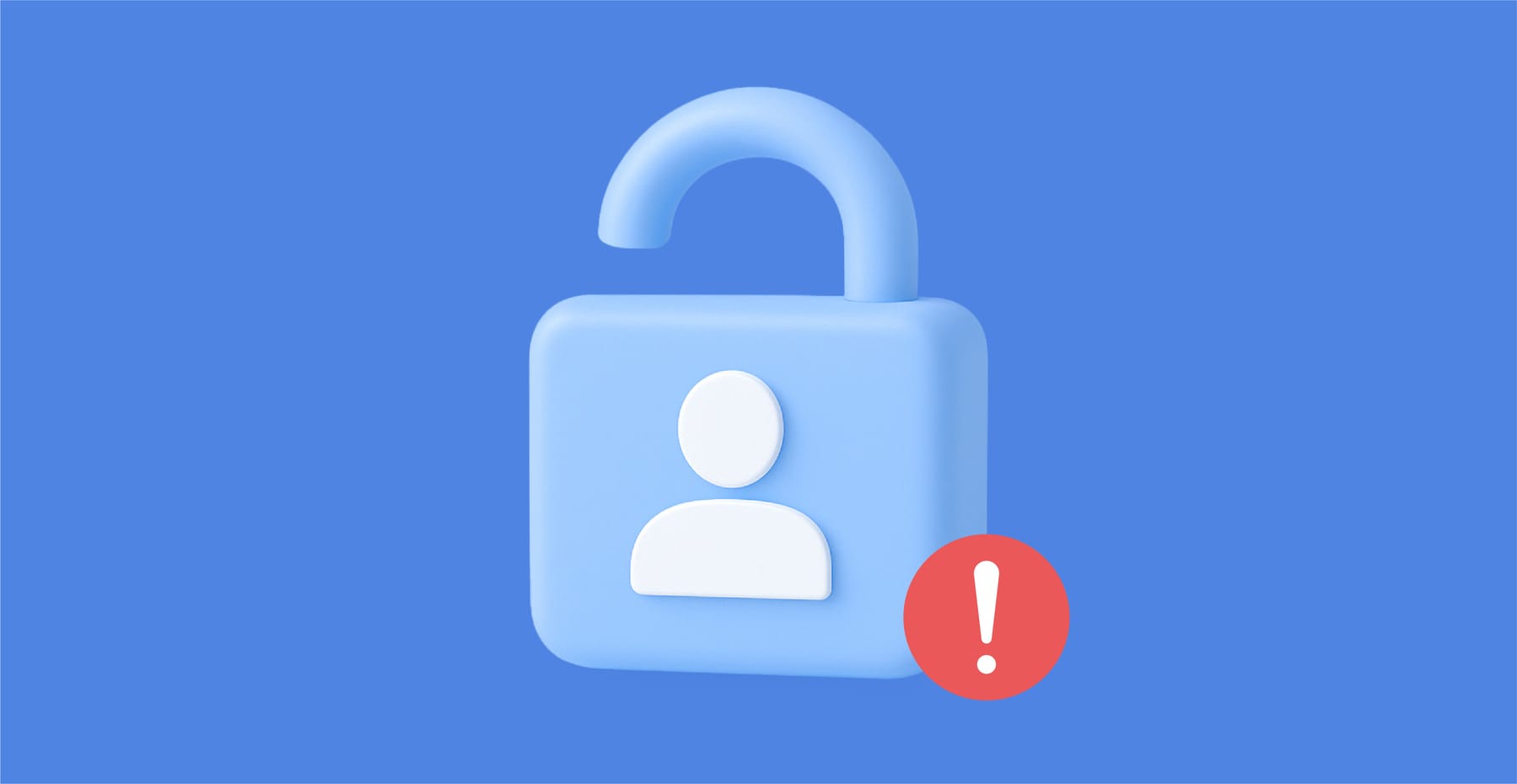
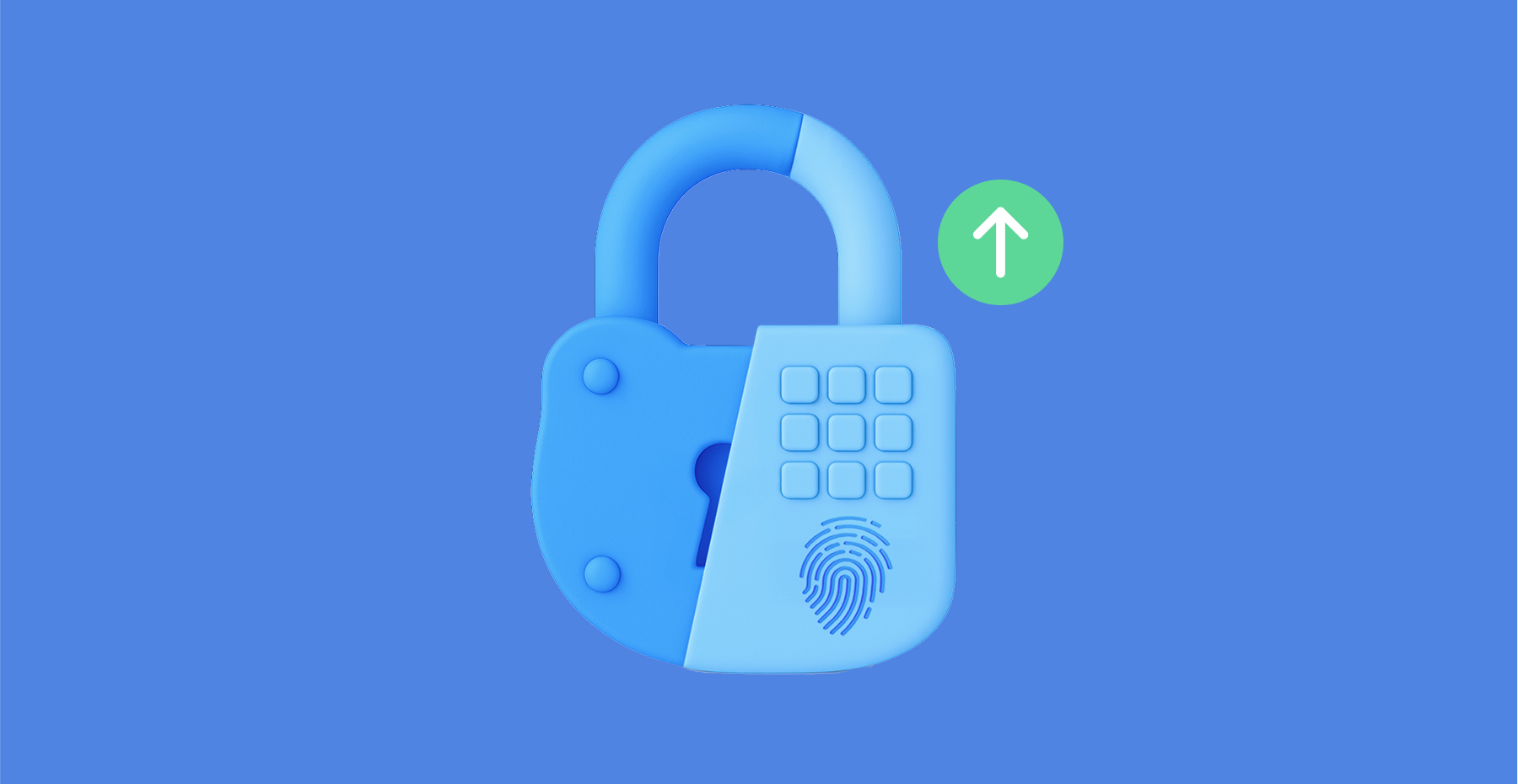
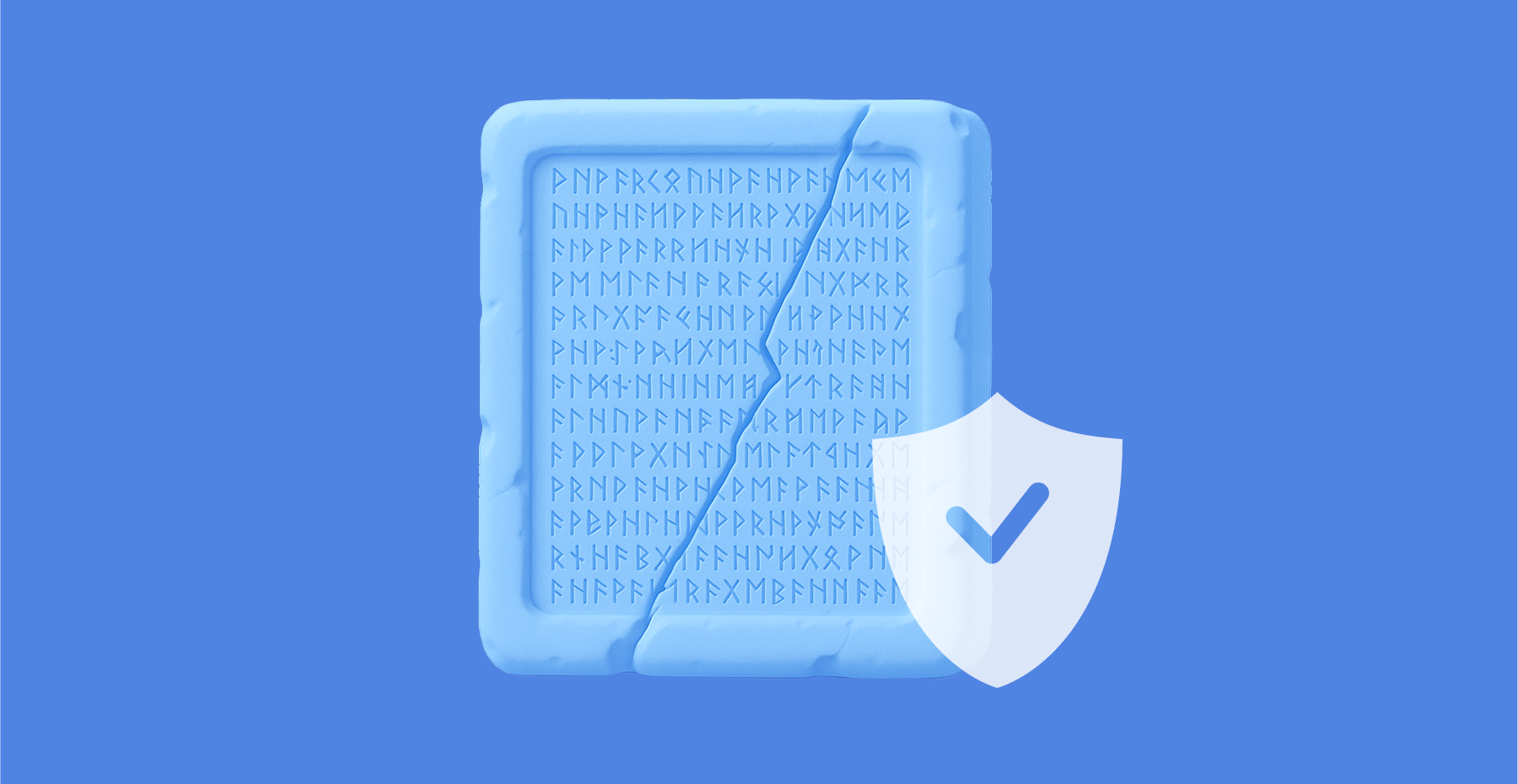
Insider threats: Prevention vs. privacy

Table of contents
- Introduction
- Existing solutions and their tradeoffs
- Our innovation: Obfuscated deterministic bloom filter indices
- Key benefits: Bridging the privacy-performance gap
- Real-world applications: Transforming password security
- Conclusion: A new era in password security
Introduction
Data breaches have become routine: millions of users worldwide face the consequences of compromised passwords. The scale is staggering: billions of credentials are exposed, fueling automated attacks and credential stuffing on a massive scale. Services like "Have I Been Pwned" now track over 12 billion breached accounts, and that number keeps growing.
Security professionals and users face a direct challenge: how can we check if a password has been compromised in a data breach without revealing the password itself to the checking service? The task sounds simple, but in reality, it requires a delicate balance between privacy, security, and performance.
Traditional approaches force a trade-off. Direct hash lookups are fast but unsafe: they expose the full hash, risking password leaks. More sophisticated cryptographic protocols offer strong privacy guarantees but come with significant computational overhead and implementation complexity that makes them impractical for many real-world applications.
We’re introducing a solution that bridges this gap: Private password breach checking using obfuscated deterministic bloom filter indices. This innovative approach provides strong privacy guarantees while maintaining the efficiency needed for practical deployment in password managers, authentication systems, and enterprise security infrastructure.
Existing solutions and their tradeoffs
To understand the significance of our new approach, it's important to examine the current methods for password breach checking and their inherent limitations.
Direct hash lookup: Simple but insecure
The earliest password breach checking services, such as LeakedSource, employed a straightforward approach: users would submit the SHA-1 hash of their password, and the service would check if that exact hash appeared in their breach database. Although simple to deploy and very fast to apply, this method is insecure and prone to potential attacks.
When a user submits their password hash directly, they're essentially handing over a cryptographic fingerprint of their password to the service. This creates several attack vectors: malicious actors could perform rainbow table attacks against the submitted hash, launch focused dictionary attacks targeting that specific hash, or correlate the same password across multiple services. The fundamental problem is that the hash itself becomes a valuable piece of information that can be exploited.
K-anonymity: A step forward with remaining vulnerabilities
Recognizing the security issues with direct hash submission, Troy Hunt introduced the k-anonymity approach for the "Have I Been Pwned" service, which has since been adopted by major companies including Cloudflare and Microsoft. This method represents a significant improvement in privacy protection while maintaining reasonable performance characteristics.
In the k-anonymity approach, instead of sending the full password hash, the client computes the SHA-1 hash of their password and sends only the first 5 hexadecimal characters (representing 20 bits) to the server. The server then returns all hashes in its database that begin with that prefix, typically between 400 and 800 hashes. The client then checks locally whether their full hash appears in the returned list.
This approach offers several advantages: it's simple to implement, provides reasonable privacy protection, and uses bandwidth efficiently. However, recent security analysis has revealed significant vulnerabilities. The method still leaks 20 bits of entropy about the password, and research has demonstrated that this partial information can increase password cracking success rates by an order of magnitude when attackers have access to the leaked prefixes. The approach is particularly vulnerable to targeted attacks against highvalue accounts, where even partial information can be valuable to sophisticated adversaries.
Cryptographic protocols: Strong privacy at a high cost
At the other end of the spectrum, advanced cryptographic protocols offer robust privacy guarantees but come with substantial implementation and performance costs. Two primary approaches have emerged in this category: Oblivious Pseudorandom Functions (OPRF) and Private Set Intersection (PSI).
The OPRF approach, used in Google's Password Checkup service and Apple's iCloud Keychain, employs a sophisticated cryptographic dance. The client first "blinds" its password hash using a random value, creating a masked version that reveals nothing about the original password. The server then applies a pseudorandom function to this blinded value without learning anything about the underlying password. Finally, the client "unblinds" the result and checks if the final value exists in a pre-downloaded set of breached identifiers.
Private Set Intersection protocols take a different approach, using advanced cryptographic techniques like homomorphic encryption or garbled circuits. These protocols allow a client to learn the intersection of its password set and the server's breach database without either party revealing their complete set to the other.
While these cryptographic approaches provide excellent privacy guarantees with no information leakage, they come with significant drawbacks. They require complex implementations involving elliptic curve cryptography, impose high computational costs that can be 100 to 1000 times slower than simple hash operations, and in some PSI protocols, require substantial bandwidth for large breach sets. These factors make them impractical for many real-world applications, particularly those requiring real-time password validation or deployment on resource-constrained devices.
Local and offline approaches: Perfect privacy with practical limitations
Some organizations have opted for local or offline approaches to achieve perfect privacy. There are services like "Have I Been Pwned" that offer downloadable password lists, allowing organizations to download the entire breach database (approximately 25GB uncompressed, 11GB compressed) and perform searches locally. Organizations can also build local Bloom filters from these datasets, reducing storage requirements to around 860MB for 500 million passwords with a 0.1% false positive rate.
While local approaches provide perfect privacy since no network communication is required, they present their own challenges. Storage requirements can be prohibitive, especially for mobile applications. Keeping the local database synchronized with new breaches requires regular updates, and the approach is generally impractical for most enduser applications, particularly on mobile devices with limited storage capacity.
Our innovation: Obfuscated deterministic bloom filter indices
Our new algorithm represents a fundamental breakthrough in password breach checking by introducing a new approach that combines the efficiency of Bloom filters with sophisticated obfuscation techniques. The result is a system that provides strong privacy guarantees while maintaining the performance characteristics needed for real-world deployment.
Understanding bloom filters: The foundation
To understand our approach, it's helpful to first grasp the concept of a Bloom filter. A Bloom filter is a space-efficient probabilistic data structure designed to test whether an element is a member of a set. Think of it as a highly compressed representation of a large dataset that can quickly answer the question "Is this item definitely not in the set?" or "This item might be in the set."
The beauty of Bloom filters lies in their efficiency. Instead of storing the actual password hashes, a Bloom filter represents the breach database as a large array of bits. When a password hash is added to the filter, multiple hash functions are applied to generate several index positions in the bit array, and those positions are set to 1. To check if a password might be compromised, the same hash functions are applied to generate the same index positions, and if all those positions contain 1, the password might be in the breach database.
The probabilistic nature of Bloom filters means they can produce false positives (indicating a password might be breached when it actually isn't) but never false negatives (they will never miss a password that is actually breached). This characteristic makes them perfect for security applications where it's better to err on the side of caution.
The core innovation: Deterministic obfuscation
The key insight behind our algorithm is that while Bloom filters are efficient, directly querying specific bit positions would still reveal information about the password being checked. Our solution introduces a sophisticated obfuscation mechanism that hides the real query among carefully crafted noise.
The algorithm operates on a simple but powerful principle: when checking a password, instead of requesting only the bit positions that correspond to that password, the client also requests additional "noise" positions that are generated deterministically but appear random to the server. This creates a situation where the server cannot distinguish between the real query positions and the fake ones, effectively hiding the password being checked.
What makes this approach particularly elegant is the use of deterministic noise generation. Unlike random noise, which would create different query patterns each time the same password is checked, our deterministic approach ensures that checking the same password always generates the same set of noise positions. This consistency is crucial for both security and efficiency reasons.
How the algorithm works: A three-phase process
Our algorithm operates through three distinct phases, each designed to maintain privacy while ensuring efficient operation.
Phase 1: Server setup
The server begins by taking a comprehensive set of compromised password hashes from known data breaches. These hashes are then used to populate a large Bloom filter bit array. For each compromised password hash, multiple hash functions are applied to generate several index positions in the bit array, and those positions are marked as 1. The result is a compact representation of millions or billions of compromised passwords that can be queried efficiently.
Phase 2: Client query generation
When a client wants to check a password, the process begins by computing a cryptographic hash of the password. The client then generates two sets of indices: the "true indices" that correspond to the password being checked, and "noise indices" that serve as decoys.
The true indices are generated by applying the same hash functions used by the server to the password hash. These are the positions in the Bloom filter that would need to be checked to determine if the password is compromised.
The noise indices are generated using a pseudorandom function keyed with a secret that only the client knows. This secret ensures that the noise appears random to the server but is deterministic for the client. The number of noise indices is carefully chosen to provide strong privacy guarantees while maintaining efficiency.
Once both sets of indices are generated, they are combined and shuffled in a deterministic but unpredictable manner. This shuffling ensures that the server cannot distinguish between real and fake indices based on their position in the query.
Phase 3: Query processing and response
The client sends the shuffled set of indices to the server, which responds with the bit values at each requested position. The server has no way to determine which indices correspond to the actual password being checked and which are noise.
Upon receiving the response, the client examines only the bit values corresponding to the true indices. If any of these positions contains a 0, the password is definitively not compromised. If all true index positions contain 1, the password may be compromised, though there's a small possibility of a false positive due to the probabilistic nature of Bloom filters.
The power of deterministic noise
The deterministic nature of our noise generation provides several crucial advantages over alternative approaches. When the same password is checked multiple times, the exact same query is sent to the server each time. This consistency prevents correlation attacks where an adversary might try to identify patterns across multiple queries for the same password.
In contrast, if random noise were used, repeated queries for the same password would generate different noise patterns each time. A sophisticated adversary could potentially analyze multiple queries and identify the common elements, gradually narrowing down the true indices. Our deterministic approach eliminates this vulnerability entirely.
The deterministic noise also provides computational efficiency benefits. Since the same password always generates the same query, clients can cache results, and the system can optimize for repeated queries without compromising security.
Key benefits: Bridging the privacy-performance gap
Our algorithm delivers a unique combination of benefits that address the fundamental challenges in password breach checking, offering a practical solution that doesn't force users to choose between privacy and performance.
Strong privacy guarantees
The algorithm provides robust privacy protection through several mechanisms. The deterministic obfuscation ensures that queries for different passwords are computationally indistinguishable to the server. Even with access to vast computational resources and knowledge of common passwords, an adversarial server cannot determine which password is being checked based solely on the query pattern.
The system is specifically designed to resist correlation attacks, where an adversary attempts to learn information by analyzing multiple queries over time. Because the same password always generates the same query pattern, repeated checks don't provide additional information that could compromise privacy. This stands in stark contrast to systems using random noise, where multiple queries for the same password would eventually reveal the true query pattern.
Operating under an honest-but-curious threat model, the algorithm assumes the server will follow the protocol yet may attempt to extract information from observed queries. Our approach ensures that even a sophisticated adversary with access to public breach databases and the ability to store and analyze all queries over time cannot extract meaningful information about the passwords being checked.
Exceptional performance characteristics
One of the most compelling aspects of our algorithm is its performance profile. Experimental evaluation demonstrates that the system achieves sub-millisecond query times, making it suitable for real-time password validation scenarios. This performance is achieved through the efficient nature of Bloom filter operations and the streamlined query process.
The bandwidth overhead is minimal, typically requiring less than 1KB per query. This efficiency makes the algorithm practical for mobile applications and environments with limited network connectivity. The low bandwidth requirements also reduce server costs and improve scalability for service providers.
The computational overhead on both client and server sides is minimal. Clients need only perform basic cryptographic hash operations and simple bit manipulations. Servers can respond to queries with straightforward bit array lookups. This simplicity stands in stark contrast to cryptographic protocols that require complex elliptic curve operations or homomorphic encryption computations.
Scalability and practical deployment
Built for real-world deployment, the algorithm ensures that server-side infrastructure can efficiently process millions of concurrent queries while keeping response times consistent. The Bloom filter representation allows for compact storage of massive breach databases, making it economically feasible to maintain comprehensive breach checking services.
The system supports easy updates as new breaches are discovered. New compromised passwords can be added to the Bloom filter without requiring changes to the client-side implementation or forcing users to update their software. This flexibility is crucial for maintaining up-to-date protection against emerging threats.
Robust resistance to denial-of-service attacks is another advantage. The lightweight nature of query processing means that servers can handle high query volumes without significant resource consumption. Because queries are deterministic, effective caching can further boost performance and reduce server load.
Compatibility and integration
Our approach is designed to integrate seamlessly with existing security infrastructure. The algorithm can be implemented as a drop-in replacement for existing password breach checking mechanisms without requiring significant changes to client applications. Password managers, authentication systems, and enterprise security tools can adopt the algorithm with minimal modification to their existing codebases.
The system is compatible with various deployment models, from cloud-based services to on-premises installations. Organizations can choose to operate their own breach checking infrastructure using our algorithm while maintaining the same privacy and performance benefits.
The algorithm also supports various customization options to meet specific security requirements. Organizations can adjust the noise levels, Bloom filter parameters, and other configuration options to balance privacy, performance, and storage requirements according to their specific needs.
Real-world applications: Transforming password security
The practical benefits of our algorithm translate into significant improvements across a wide range of security applications and use cases. The combination of strong privacy guarantees and high performance opens up new possibilities for password security that were previously impractical or impossible.
Password managers: Enhanced security without compromise
Password managers represent one of the most compelling applications for our algorithm. These tools are responsible for generating, storing, and managing passwords for millions of users, making them a critical component of modern digital security. However, traditional password managers have faced challenges in implementing comprehensive breach checking due to privacy and performance constraints.
With our algorithm, password managers can now offer real-time breach checking for all stored passwords without compromising user privacy. When users save a new password or during periodic security audits, the password manager can instantly verify whether the password has appeared in known data breaches. This capability enables password managers to provide immediate feedback to users, encouraging them to change compromised passwords before they can be exploited.
The low latency and minimal bandwidth requirements make it practical to check passwords in real-time as users type them during password creation. This immediate feedback can guide users toward stronger, uncompromised passwords without creating friction in the user experience. The privacy guarantees ensure that even the password manager service provider cannot learn about the specific passwords being checked, maintaining the trust that is essential for these security tools.
Authentication systems: Proactive security measures
Modern authentication systems can leverage our algorithm to implement proactive security measures that protect users from credential-based attacks. During login attempts, authentication systems can check submitted passwords against breach databases in realtime, identifying potentially compromised credentials before they can be used maliciously.
This capability enables authentication systems to implement adaptive security policies. For example, if a user attempts to log in with a password that has been found in a data breach, the system can require additional authentication factors, prompt for a password change, or temporarily restrict account access until the user updates their credentials. These measures can significantly reduce the success rate of credential stuffing attacks and other passwordbased threats.
The algorithm's performance characteristics make it suitable for high-volume authentication scenarios, such as enterprise login systems or consumer web services with millions of users. The sub-millisecond query times ensure that breach checking doesn't introduce noticeable delays in the authentication process, maintaining a smooth user experience while enhancing security.
Enterprise security infrastructure: Comprehensive protection
Large organizations face unique challenges in password security due to the scale and complexity of their IT environments. Our algorithm provides enterprise security teams with powerful tools for implementing comprehensive password security policies across their organizations.
Enterprise security systems can use the algorithm to continuously monitor employee passwords against breach databases, identifying compromised credentials before they can be exploited by attackers. This monitoring can be integrated with existing identity and access management systems, automatically triggering password reset requirements when compromised credentials are detected.
The algorithm also supports compliance requirements by providing organizations with the ability to demonstrate that they are actively monitoring for compromised credentials. Many regulatory frameworks and security standards require organizations to implement measures for detecting and responding to credential compromise, and our algorithm provides a practical, privacy-preserving solution for meeting these requirements. For organizations with strict data privacy requirements, the algorithm's privacy guarantees ensure that sensitive password information never leaves the organization's control. This capability is particularly important for organizations in regulated industries or those handling sensitive personal information.
Consumer applications: Democratizing security
The efficiency and simplicity of our algorithm make it practical to implement in consumer applications that previously couldn't afford the overhead of comprehensive breach checking. Mobile applications, web browsers, and other consumer software can now offer enterprise-grade password security features without requiring significant computational resources or complex cryptographic implementations.
Web browsers can integrate the algorithm to provide real-time feedback when users create or update passwords on websites. This integration can help users avoid reusing compromised passwords across multiple sites, reducing their exposure to credential stuffing attacks. The low bandwidth requirements make this practical even on mobile networks with limited connectivity.
Consumer applications can also use the algorithm to implement security dashboards that help users understand and improve their overall password security posture. By checking all of a user's passwords against breach databases, these applications can provide personalized recommendations for improving security without compromising the privacy of individual passwords.
Service providers: Enabling privacy-preserving security services
Our algorithm creates new opportunities for service providers to offer privacy-preserving security services. Companies can build breach checking services that provide strong privacy guarantees to their customers, enabling new business models and service offerings that were previously impractical due to privacy concerns.
The algorithm's efficiency makes it economically viable to operate large-scale breach checking services. The low computational and bandwidth requirements reduce operational costs, making it possible to offer these services at scale while maintaining reasonable pricing. The ability to handle high query volumes also enables service providers to serve large customer bases without significant infrastructure investments.
Service providers can also offer the algorithm as a component of broader security platforms, integrating breach checking with other security services such as threat intelligence, vulnerability management, and security monitoring. This integration can provide customers with comprehensive security solutions that address multiple aspects of cybersecurity while maintaining strong privacy protections.
Conclusion: A new era in password security
The introduction of our Private password breach checking algorithm using obfuscated deterministic bloom filter indices represents a significant advancement in the field of password security. By successfully bridging the gap between privacy and performance, we have created a solution that makes comprehensive password breach checking practical for a wide range of applications and use cases.
The algorithm's key innovations — deterministic noise generation, efficient Bloom filter operations, and sophisticated obfuscation techniques — combine to deliver a system that provides strong privacy guarantees while maintaining the performance characteristics needed for real-world deployment. With sub-millisecond query times and minimal bandwidth overhead, the algorithm makes it possible to implement real-time password breach checking in applications ranging from consumer password managers to enterprise authentication systems.
The privacy guarantees provided by our algorithm are particularly significant in today's regulatory environment, where data protection and user privacy are increasingly important considerations. By ensuring that password information never needs to be revealed to checking services, our algorithm enables organizations to implement comprehensive security measures while maintaining compliance with privacy regulations and user expectations.
The practical impact of this technology extends far beyond technical improvements. By making privacy-preserving password breach checking accessible and efficient, we are enabling a new generation of security tools and services that can better protect users from the growing threat of credential-based attacks. The algorithm's compatibility with existing infrastructure and ease of implementation mean that these benefits can be realized quickly and broadly across the security ecosystem.
As cyber threats continue to evolve and data breaches become increasingly common, the need for effective password security measures will only grow. Our algorithm provides a foundation for building more secure, privacy-preserving systems that can adapt to meet these challenges while maintaining the usability and performance that users expect.
The development of this algorithm represents just the beginning of our work in privacypreserving security technologies. We are committed to continuing research and development in this area, exploring new applications and improvements that can further enhance the security and privacy of digital systems.
We believe that the future of cybersecurity lies in solutions that don't force users to choose between security and privacy. Our Private password breach checking algorithm demonstrates that it is possible to achieve both goals simultaneously, providing a model for future innovations in security technology.
For organizations and developers interested in implementing this technology, we encourage you to explore the detailed technical specifications and implementation guidance provided in our comprehensive research paper. The paper includes formal security analysis, detailed implementation recommendations, and comprehensive performance evaluations that provide the foundation for successful deployment of this algorithm in production environments.
* The research paper includes detailed mathematical proofs, comprehensive performance benchmarks, and complete implementation examples for developers interested in integrating this technology into their applications.
Private password breach checking: A new algorithm for secure password validation

Table of contents
- Introduction
- What is a password manager?
- Myth 1: Password managers aren’t safe or secure
- Myth 2: Putting all my passwords in one place makes them easy to hack
- Myth 3: Remembering all my passwords is safer than trusting technology to do it for me
- Myth 4: It’s a hassle to get a password manager up and running
- Myth 5: Your passwords will be compromised if your computer is stolen
- Myth 6: Password length doesn’t matter as long as it’s complex
- Myth 7: Two-factor authentication (2FA) makes passwords irrelevant
- Myth 8: You can reuse passwords for low-importance accounts
- How Passwork improves online security
- FAQs
- Conclusion
Introduction
Would you trust a single key to open every door in your life? Probably not. And yet, when it comes to online security, countless people unwittingly take similar risks by using weak or easy-to-guess passwords — or by using the same password over and over again. Enter password managers — software designed to protect your digital life. But despite their growing popularity, myths about password managers persist, often deterring people from adopting them.
In this article, we’ll unravel common myths about password managers, explain how they work, and why indeed you can’t afford not to use them in order to up your cybersecurity. Let’s separate fact from fiction and give you the necessary tools to make smart choices to be safe online.
What is a password manager?
A password manager is like a digital vault that stores, generates, and manages your passwords securely. Instead of remembering dozens of complex passwords, you only need to remember one. These software products encrypt your credentials, ensuring that even if someone gains access to your device, they can’t decrypt your data without the master key.
Modern password managers, like Passwork, are not limited just by storing passwords. They offer features like password sharing, secure notes, and compatibility with multi-factor authentication (MFA). Think of it as your personal cybersecurity assistant, making it easy for you to stay safe without sacrificing your online experience.
Myth 1: Password managers aren’t safe or secure
This is one of the oldest password myths out there. Many believe that storing all your sensitive information in one place is just asking for trouble, but the reality is quite the opposite. Reputable password managers use end-to-end encryption to protect your data, so even if their servers are compromised, your passwords remain unreadable without your master password. And since most password managers don’t store your master password, even the provider can’t access your information.
No security system is 100% foolproof, but dismissing password managers for this reason is like refusing to lock your door because a burglar might pick the lock. In fact, password managers greatly reduce your risk by helping you create and store strong, unique passwords for every account. Consider this: a Verizon study found that 81% of data breaches are caused by weak or reused passwords. Using a password manager is like having a bank vault for your credentials—far safer than sticky notes, spreadsheets, or browser storage. It’s a crucial layer in your cybersecurity strategy.
Real-world perspective: A study by Verizon found that 81% of data breaches are caused by weak or reused passwords. Using a password manager minimizes this risk, making it a crucial layer in your cybersecurity strategy.
Myth 2: Putting all my passwords in one place makes them easy to hack
This myth stems from the fear of a "single point of failure." However, password managers are designed to be resilient. They use zero-knowledge architecture, meaning your data is encrypted locally before it’s stored. Even if the manager’s servers are compromised, your information remains secure.
And — depending on the app or service in question — features such as biometric authentication and MFA add another layer of defense, one that can't be pierced without you there to open it.
Myth 3: Remembering all my passwords is safer than trusting technology to do it for me
Let’s face it: How many of us can be bothered to remember a unique, 16-character password for every account? The human brain simply isn’t wired for this task. This is why people frequently depend on risky practices like weak passwords or using the same password for multiple accounts.
Analogy: Would you memorize every phone number in your phone book? No, you keep them in your phone. Password managers serve the same purpose, but for your digital credentials.
Myth 4: It’s a hassle to get a password manager up and running
Some people are fed up with password managers because they think the setup process is too technical. The reality? The majority of password managers are built as user-friendly as possible.
For instance, Passwork provides clear user interfaces and easy step-by-step instruction, with which absolute lay persons can't do anything wrong. Their API connector also specialise in browser extensions and mobile apps for ease of use.
Pro tip: Start small by importing passwords from your browser or manually add just a few important accounts. Once you realize how much time and strain it saves, you might even regret that you didn’t make the switch sooner.
Myth 5: Your passwords will be compromised if your computer is stolen
This is a myth, and it neglects several strong security features in modern password managers. Even if someone physically stole your device, they’d still need your master password or biometric data to access your vault.
Myth 6: Password length doesn’t matter as long as it’s complex
Complexity is important, but so does length, and maybe even more so. It becomes exponentially more difficult to crack a longer password, even with the most sophisticated software.
Example: A 12-character password consisting of random words (e.g., "PurpleElephantSky") is far more secure than a shorter, complex one will ever be ("P@ssw0rd").
Myth 7: Two-factor authentication (2FA) makes passwords irrelevant
While 2FA is an excellent security measure, it’s not a replacement for strong passwords. Instead, consider it an added layer of protection. A weak or reused password is enough to get you hacked even with the added layer of 2FA protection.
Myth 8: You can reuse passwords for low-importance accounts
Even "low-importance" accounts can be exploited in credential stuffing attacks, where stolen passwords are used to break into other accounts. It also requires you to reset a lot of other passwords and, if you’ve reused a lot of passwords (which is a bad idea), might put a significant portion of your digital life at risk
This is where a password manager comes in — creating unique passwords for each and every account without determining a tier of "importance".
How Passwork improves online security
Passwork takes password management to the next level by combining robust security features with user-friendly design. Here’s how it stands out:
- Team sharing: Share passwords with your team securely keeping everything private.
- Customizable policies: Set password strength requirements and expiration dates to enforce best practices.
- End-to-end encryption: Your data is encrypted locally, ensuring that only you can access it.
- Seamless integration: Use browser extensions and mobile apps to access your credentials anytime, anywhere.
With Passwork, managing your passwords becomes effortless, freeing you to focus on what truly matters.
FAQs
- Are password managers safe to use?
Yes, password managers encrypt everything, so, much safer than say browser storage. - Is it possible for hackers to get into my password manager?
Not without your master password or biometric authentication. Features like zero-knowledge architecture further enhance security. - What happens if I forget my master password?
With most password managers, you can set up recovery options, but you must safeguard your master password. - I use 2FA, do I still need a password manager?
Yes, 2FA complements strong passwords but doesn’t replace them. A password manager ensures your passwords are both strong and unique. - Are password managers difficult to set up?
Not at all! Most tools, including Passwork, are designed for ease of use and come with setup guides. - Can I share passwords securely with a team?
Yes, tools like Passwork offer features for secure password sharing within teams.
Conclusion
Password managers are no longer a luxury: they are a must-have in today’s pretty much entirely digital world. By debunking these myths, we hope to encourage more users to embrace password managers.
Still hesitant? The risks of weak or reused passwords far outweigh the few minutes it takes to set up a password manager. Be in charge of your online security today — your future self will thank you.
Further reading
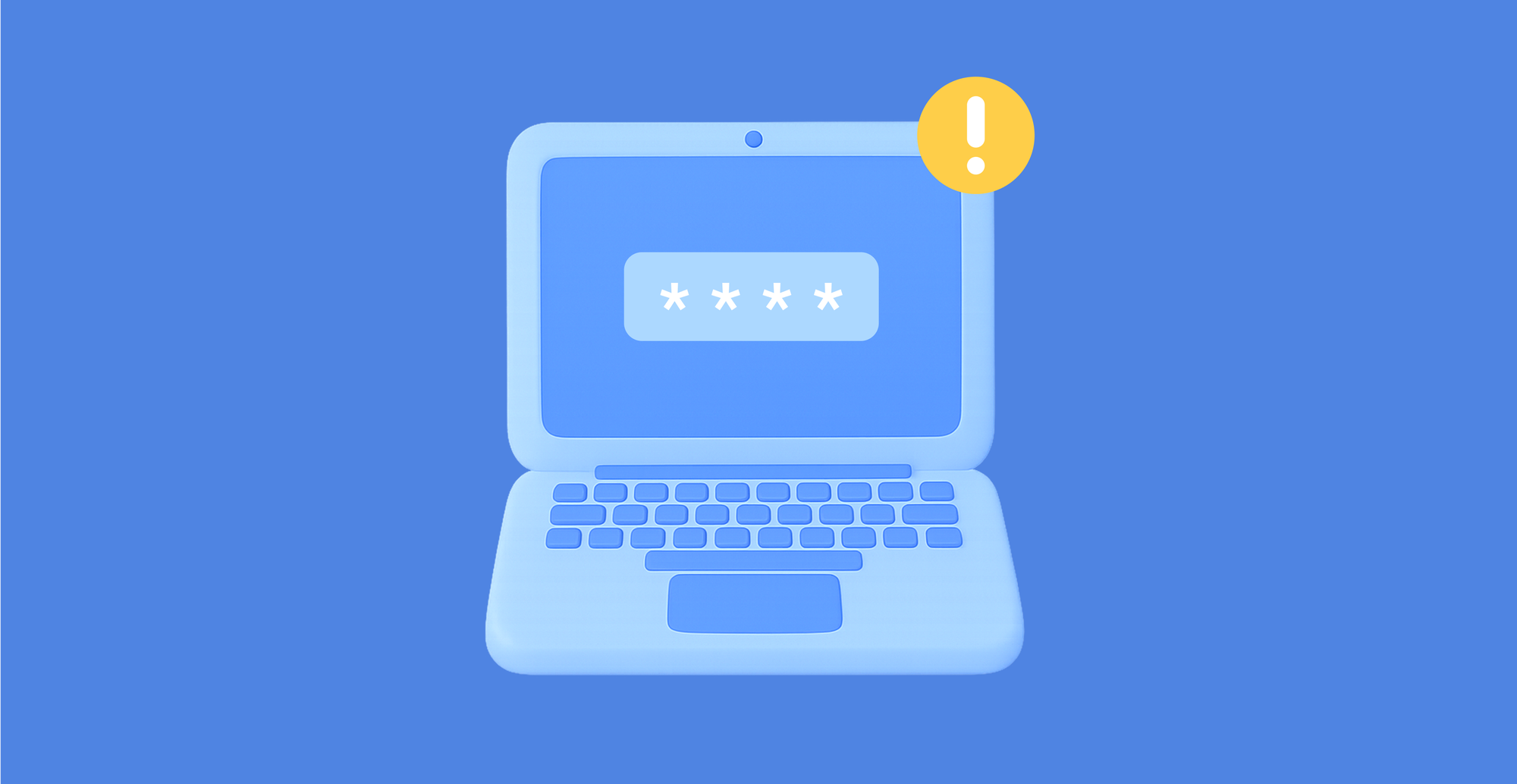


Common myths about password managers

Table of contents
- Introduction
- What is a cyber attack?
- Common types of cyber attacks on businesses
- How to protect your online business from cyber attacks
- How Passwork protects your online business from cyber attacks
- FAQ
- Conclusion
Introduction
Imagine waking up one morning to find your business crippled by a cyber attack — your customer data stolen, your systems locked, and your reputation hanging by a thread. It’s a nightmare scenario, but one faced by countless businesses every year. Cybersecurity is no longer optional; it’s a necessity. Whether you're running a small business or managing a large enterprise, understanding how to prevent cyber attacks is critical to staying ahead of increasingly sophisticated threats.
In this article, we’ll dive into practical strategies for protecting your business from cyber attacks, ranging from securing networks to educating employees. We’ll also explore how tools like Passwork password manager can play a pivotal role in fortifying your defenses. Ready to safeguard your business? Let’s get started.
What is a cyberattack?
A cyberattack is an intentional attempt by hackers or malicious actors to compromise the security of a system or network. These attacks come in various forms, including phishing, ransomware, denial-of-service (DoS), and malware. For businesses, the stakes are high — financial loss, data breaches, and damaged reputations are just the tip of the iceberg.
Common types of cyber attacks on businesses
Phishing
Phishing involves fraudulent emails or messages designed to trick employees into revealing sensitive information, such as login credentials or financial data.
Reports: Phishing remains one of the most prevalent and damaging forms of cyberattacks. In Q4 2024 alone, 989,123 phishing attacks were detected globally (APWG).
Example: In 2023, attackers impersonated Microsoft in a phishing campaign targeting over 120,000 employees across industries. The emails mimicked legitimate notifications, resulting in compromised credentials for several corporate accounts.
Ransomware
Ransomware attacks involve hackers encrypting your systems and demanding payment for decryption keys.
Reports: In 2024, 59% of organizations were hit by ransomware attacks, with 70% of these attacks resulting in data encryption. The average ransom demand increased to $2.73 million, a sharp rise from $1.85 million in 2023 (Varonis Ransomware Statistics).
Example: In 2024, the Colonial Pipeline ransomware attack crippled fuel supply across the eastern U.S. The company paid a $4.4 million ransom to regain access to its systems, highlighting the severe operational and financial impacts of such attacks.
DDoS (Distributed Denial of Service)
DDoS attacks aim to disrupt operations by overwhelming servers with traffic.
Reports: In 2023, the largest recorded DDoS attack peaked at 71 million requests per second, targeting Google Cloud.
Example: In 2024, the GitHub DDoS attack brought down the platform for hours, affecting millions of developers globally. The attack exploited botnets to flood GitHub’s servers with malicious traffic.
Credential stuffing
Attackers use stolen login credentials from one breach to gain access to other systems due to password reuse. Attackers use stolen credentials from one breach to gain access to other systems.
Reports: With 65% of users reusing passwords, credential stuffing remains a critical threat.
Example: In 2023, attackers used credential stuffing to breach Zoom accounts, exposing private meetings and sensitive data. The attack leveraged credentials leaked in earlier breaches of unrelated platforms.
Malware
Malware refers to malicious software, such as viruses, worms, or spyware, that infiltrates systems to steal data or cause damage.
Reports: Malware-related email threats accounted for 39.6% of all email attacks in 2024, and the global financial impact of malware exceeded $20 billion annually (NU Cybersecurity Report).
Example: The Emotet malware campaign in 2023 targeted financial institutions worldwide, stealing banking credentials and causing widespread disruptions.
Social engineering
Social engineering manipulates individuals into revealing confidential information or granting access to secure systems.
Reports: In 2024, 68% of breaches involved the human element, often through social engineering tactics like pretexting, baiting, and tailgating (Verizon DBIR).
Example: In 2023, an attacker posing as a senior executive tricked an employee at Toyota Boshoku Corporation into transferring $37 million to a fraudulent account.
Supply chain attacks
Supply chain attacks exploit vulnerabilities in third-party vendors or suppliers to infiltrate larger organizations.
Reports: In 2023, 62% of system intrusions were traced back to supply chain vulnerabilities (IBM X-Force).
Example: The SolarWinds attack remains one of the most damaging supply chain incidents. Hackers compromised the Orion software update, affecting thousands of organizations, including government agencies and Fortune 500 companies.
Data breaches
Data breaches involve unauthorized access to sensitive customer or company information.
Reports: In 2024, the average cost of a data breach reached $4.45 million, a 15% increase over three years (IBM Cost of a Data Breach Report 2024). These breaches often result from weak passwords, phishing, or insider threats.
Example: In 2023, the T-Mobile data breach exposed the personal information of 37 million customers, including names, addresses, and phone numbers, leading to significant reputational damage and regulatory scrutiny.
Understanding these threats is the first step toward prevention.
How to protect your online business from cyber attacks
Protecting your business from cyber threats requires a multi-layered approach. Below are actionable strategies to fortify your defenses.
Secure your networks and databases
Your network is the backbone of your business operations, making it a prime target for attackers. Implement these measures to secure it:
Install firewalls
Firewalls act as a barrier between your internal network and external threats.
Use VPNs
Encrypt data transfers with Virtual Private Networks to prevent interception.
Segment networks
Divide your network into smaller sections to contain breaches.
Recommendation: Reduce the risk of data breaches by segmenting your network. Isolate sensitive customer data from general operations to limit unauthorized access and minimize potential exposure in case of a breach.
Educate your employees
Your employees are your first line of defense — and often the weakest link. Training them on cybersecurity best practices can significantly reduce risks.
Conduct regular workshops
Teach employees how to recognize phishing emails and suspicious links.
Simulate cyber attacks
Run mock scenarios to test their response and improve preparedness.
Create a reporting system
Encourage employees to report potential threats immediately.
Recommendation: Since 95% of cybersecurity breaches are caused by human error, prioritize educating your team. Implement regular cybersecurity training to raise awareness and equip employees with the knowledge to identify and prevent potential threats.
Ensure proper password management
Weak passwords are an open invitation for hackers. Proper password management is essential to protecting your systems.
Use strong passwords
Encourage the use of complex passwords with a mix of letters, numbers, and symbols.
Adopt a password manager
Implement a secure solution like Passwork to simplify password management, encourage unique passwords for each account, and reduce the risk of breaches.
Change passwords regularly
Implement policies for periodic password updates.
Recommendation: Use a secure password manager to generate and store complex, unique passwords for all accounts, enforce regular password updates, and eliminate the risks associated with weak or reused credentials.
Carefully manage access and identity
Controlling who has access to sensitive data is crucial. Follow these steps:
Role-based access control (RBAC)
Assign access based on job roles.
Monitor access logs
Regularly review who accessed what and when.
Deactivate unused accounts
Immediately revoke access for former employees.
Set up multi-factor authentication (MFA)
Passwords alone aren’t enough. MFA adds an extra layer of security by requiring multiple forms of verification.
SMS or email codes
Require a code sent to the user’s phone or email.
Biometric authentication
Use fingerprint or facial recognition for secure access.
App-based authentication
Tools like Passwork 2Fa and Google Authenticator offer reliable MFA solutions.
Encrypt your data
Encryption ensures that even if data is intercepted, it remains unreadable to unauthorized users.
Encrypt files
Use advanced encryption algorithms for sensitive documents.
Secure communication channels
Encrypt emails and messaging platforms.
Adopt end-to-end encryption
Particularly important for customer-facing applications.
Create backups
Backups are your safety net in the event of a ransomware attack or accidental data loss.
Automate backups
Use cloud services to schedule regular backups.
Keep multiple copies
Store backups both online and offline.
Test recovery
Periodically test your ability to restore data from backups.
Ensure your software is kept up-to-date
Outdated software is a goldmine for hackers. Regular updates close known vulnerabilities.
Enable automatic updates
Ensure your systems update without manual intervention.
Patch management
Use tools to monitor and apply security patches.
Audit software
Regularly review third-party applications for potential risks.
Create security policies and practices
Formal policies provide a clear framework for cybersecurity.
Draft a cybersecurity policy
Include guidelines for data handling, password use, and incident response.
Conduct regular audits
Review compliance with security protocols.
Update policies
Adapt your policies to evolving threats.
Inform your customers
Transparency builds trust. Inform customers about your cybersecurity measures and educate them on protecting their data.
Send security tips
Share advice via newsletters or blogs.
Offer secure payment options
Use encrypted payment gateways.
Respond to breaches
Communicate openly and promptly if an incident occurs.
Understand what data you have and classify it
Knowing what data you store — and its value — is key to prioritizing protection.
Inventory your data
Create a list of sensitive information, such as customer details and financial records.
Classify data
Separate high-risk data from less critical information.
Limit data collection
Only collect what’s necessary for business operations.
How Passwork protects your business from cyberattacks
Passwork password manager is a game-changer for businesses aiming to strengthen their cybersecurity. Here’s how:
Centralized password management
Simplifies and secures access for teams.
Role-based permissions
Ensures employees only access what they need.
Audit trails
Tracks password usage for accountability.
Encrypted storage
Keeps passwords safe from unauthorized access.
FAQ
What’s the most common type of cyberattack on businesses?
Phishing is the most prevalent, accounting for over 80% of reported incidents.
How does Passwork enhance password security?
Passwork provides encrypted storage, role-based permissions, and audit trails for secure password management.
How often should I update my software?
Software should be updated as soon as patches are available to close vulnerabilities.
What’s the importance of encryption in cybersecurity?
Encryption ensures that intercepted data remains unreadable to unauthorized users.
Can small businesses afford cybersecurity measures?
Yes, many affordable tools and strategies cater specifically to small businesses. Passwork provides flexible and cost-effective plans tailored for small businesses.
What should I do if my business suffers a cyberattack?
Immediately contain the breach, inform stakeholders, and consult cybersecurity professionals.
How can I educate employees about cybersecurity?
Conduct regular workshops, simulate attacks, and provide easy-to-follow guidelines.
Conclusion
Cybersecurity isn’t just a technical issue — it’s a business imperative. By implementing the strategies outlined above, you can protect your online business from cyberattacks, safeguard sensitive data, and build trust with your customers. Tools like Passwork make it easier than ever to stay secure without sacrificing efficiency.
Further reading:

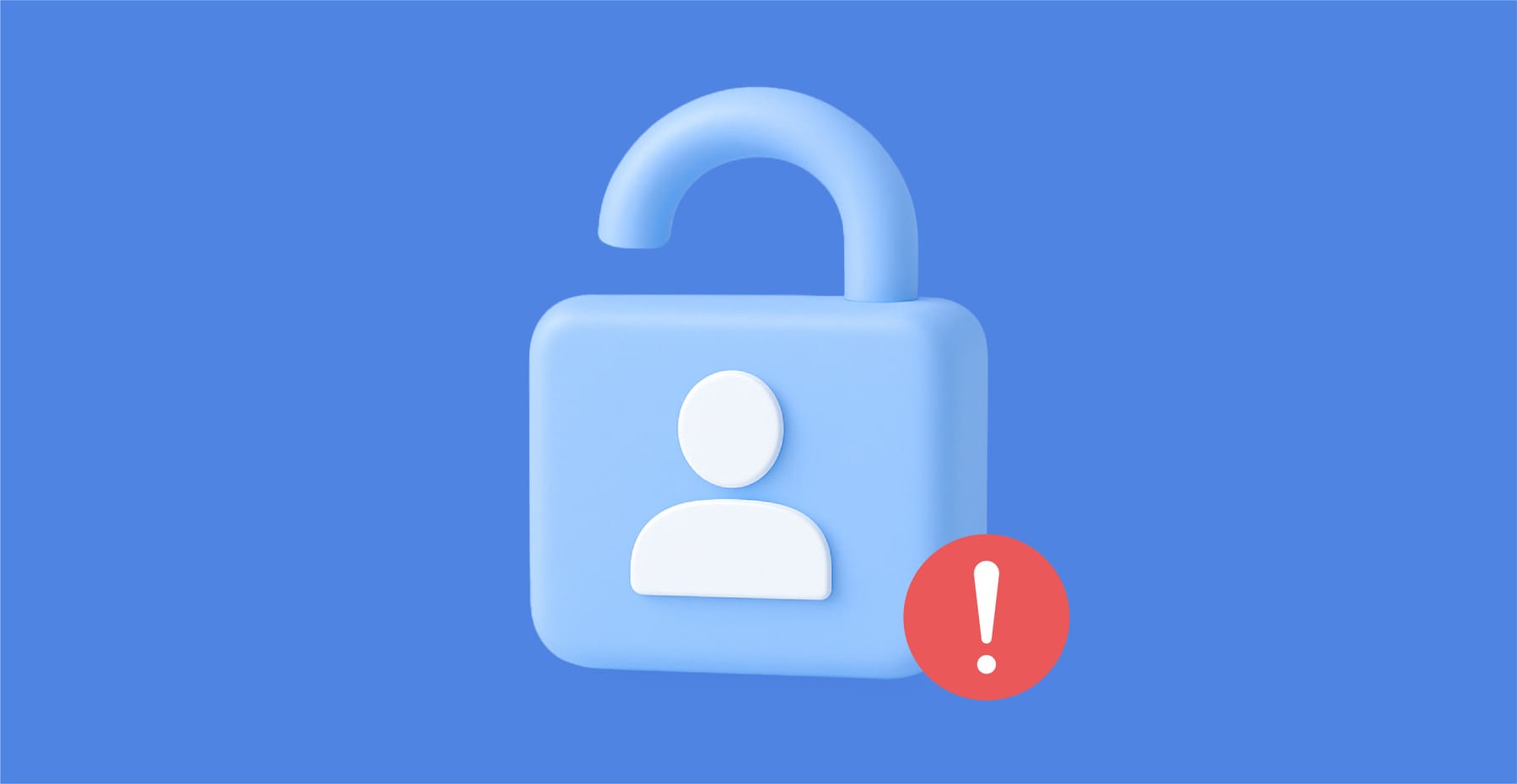

How to protect your online business from cyberattacks
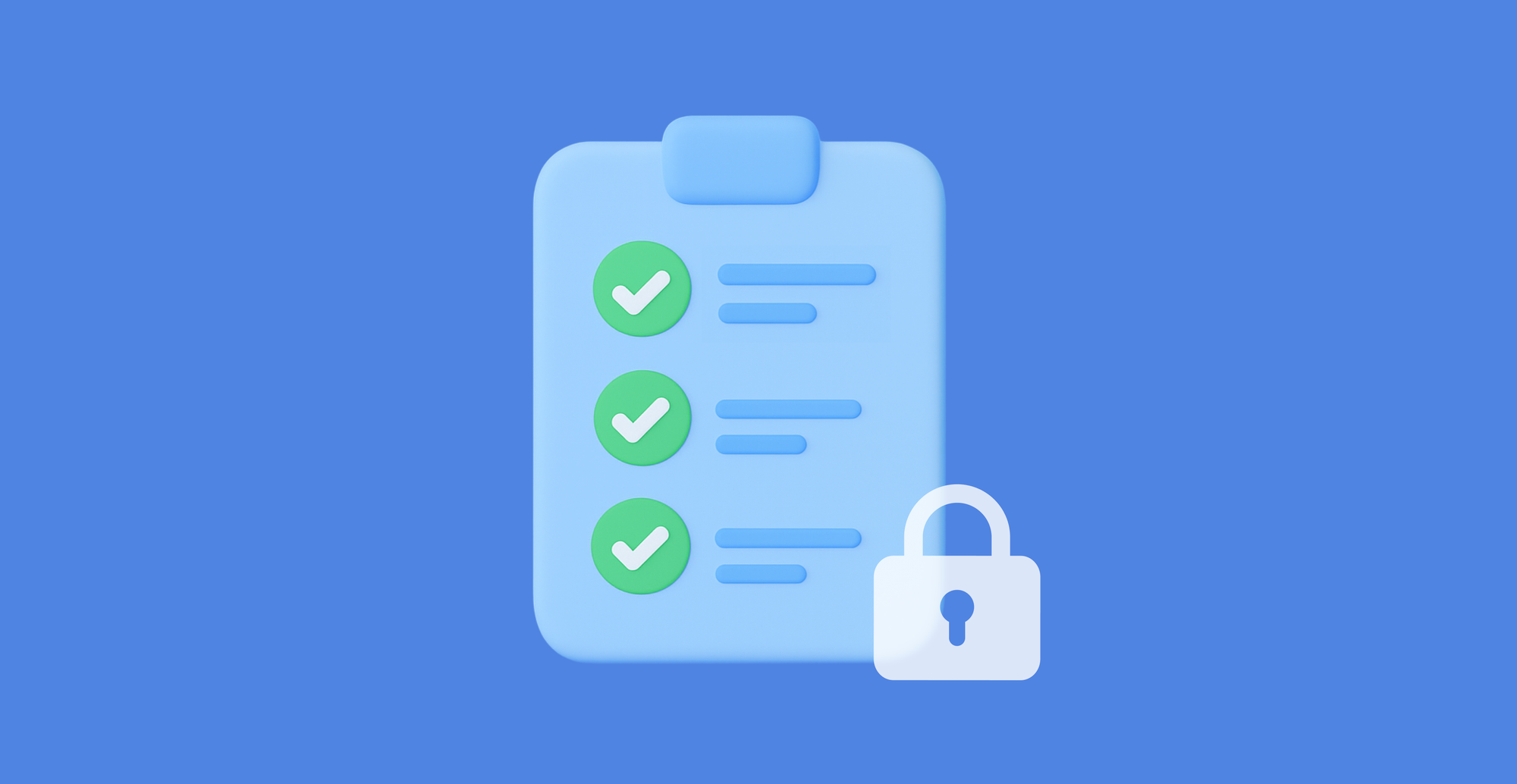
Table of contents
- Introduction
- Why cybersecurity is crucial for small businesses
- Essential cybersecurity checklist for small businesses
- Cybersecurity FAQ
- Quick takeaways
- Conclusion
Introduction
Small businesses are increasingly becoming targets for cybercriminals — with limited resources and often less robust security infrastructures compared to larger enterprises, these businesses are vulnerable to a variety of cyber threats. Implementing a thorough cyber security plan for small business is critical to safeguarding sensitive data and maintaining trust with customers. This article will guide you through a detailed small business cyber security checklist, providing actionable steps to enhance your internet security for businesses and protect against digital attacks.
Why cybersecurity is crucial for small businesses
Many small business owners underestimate the importance of cybersecurity, assuming that they are too small to be targeted. However, this misconception can lead to devastating consequences. According to a report by the National Cyber Security Alliance, 60% of small businesses that experience a cyber attack go out of business within six months. This statistic alone underscores the need for robust cybersecurity protection methods.
The growing threat of cyberattacks
- In 2023, the U.S. reported 880,418 cyberattack complaints, representing a 10% increase compared to the previous year.
- Total losses from these attacks exceeded $12.5 billion, marking a 22% year-over-year increase.
- Small businesses are frequently targeted because they often lack advanced security tools and awareness of the risks.
- As larger organizations strengthen their defenses, cybercriminals are shifting focus to smaller companies, viewing them as easier targets.
Why are small businesses vulnerable
Small businesses often fall victim to cyberattacks due to several key vulnerabilities:
- Lack of preparedness: Research shows that 23% of small businesses use no device security, while 32% rely on free solutions that may not offer adequate protection.
- False sense of security: Many small business owners mistakenly believe their size makes them unattractive targets, leaving them unprepared for sophisticated attacks.
- High value of data: Even small enterprises hold valuable customer information, such as credit card numbers and personal data, which hackers can exploit or sell on the dark web.
Key reasons for implementing cybersecurity measures
- Protect sensitive data: Small businesses often handle sensitive customer information, including credit card details and personal identifiers, which must be protected from breaches.
- Maintain business reputation: A single cyber attack can severely damage a business's reputation, leading to loss of customers and revenue.
- Compliance with regulations: Various industries require businesses to adhere to specific cybersecurity standards and regulations, such as GDPR or HIPAA.
- Prevent financial losses: Cyber attacks can lead to significant financial losses, not only from theft but also from the cost of recovery and legal liabilities.
Essential cybersecurity checklist for small businesses
Creating a comprehensive cyber security checklist is vital for identifying vulnerabilities and implementing protective measures. Here's a detailed guide to securing your business.
Identify your most valuable assets
Begin by identifying the data and systems that are critical to your business operations. This could include customer databases, financial records, and proprietary information. Understanding what needs the most protection will help prioritize your cybersecurity efforts.
Develop a cyber security policy
A well-defined cyber security policy sets the standard for how your business manages and protects data. It should cover:
- Data handling procedures
- Employee responsibilities
- Incident response strategies
- Regular security audits
Use a password manager
Encourage employees to use a password manager to generate and store complex passwords. This reduces the risk of password-related breaches and ensures that passwords are updated regularly. By implementing a solution like Passwork, small businesses can significantly enhance their password security, reduce the likelihood of breaches, and improve overall cybersecurity hygiene.
Secure your mobile devices
With the rise of remote work, securing mobile devices is more important than ever. Implement security measures such as:
- Device encryption
- Remote wipe capabilities
- Regular software updates
Use strong passwords
Ensure that all employees use strong, unique passwords for their accounts. A strong password typically includes a mix of letters, numbers, and symbols. With Passwork, businesses can create highly secure passwords using a flexible and customizable password generator, allowing organizations to set specific rules and parameters to meet their security requirements.
Implement two-factor or multi-factor authentication
Adding an extra layer of security through two-factor authentication (2FA) or multi-factor authentication (MFA) can significantly reduce the risk of unauthorized access.
Plan for incident response
Develop a clear incident response plan that outlines the steps to take in the event of a cyber attack. This should include:
- Immediate response actions
- Communication protocols
- Post-incident analysis
Protect your online accounts and identity
Regularly monitor your online accounts for suspicious activity and use identity protection services to safeguard against identity theft.
Engage with cybersecurity professionals
Consider hiring cybersecurity experts or consultants to conduct assessments and provide tailored advice for your business. Their expertise can help identify hidden vulnerabilities and recommend effective solutions.
Stop ransomware
Ransomware attacks are increasingly common. Protect your business by:
- Regularly backing up data
- Educating employees about phishing scams
- Keeping software up-to-date
Back up and update
Regular data backups and software updates are crucial for protecting against data loss and vulnerabilities. Ensure that backups are stored securely and can be accessed quickly in an emergency.
Foster good online habits
Promote a culture of cybersecurity awareness within your organization. Encourage employees to follow best practices, such as being cautious with email attachments and using secure networks.
Cybersecurity FAQ
Can ransomware attacks target small businesses?
Yes, ransomware attacks can and often do target small businesses. Cybercriminals assume that smaller businesses may lack robust security measures, making them easier targets.
What is the importance of cybersecurity for small businesses?
Cybersecurity is crucial for protecting sensitive data, maintaining customer trust, and ensuring compliance with regulations. It helps prevent financial losses and reputational damage.
How can small businesses protect against ransomware?
Regularly back up data, educate employees about phishing scams, and keep software updated to mitigate the risk of ransomware attacks.
What are some common cyber security measures for small businesses?
Common measures include using strong passwords, implementing MFA, securing mobile devices, and conducting regular security audits.
How often should I update my passwords?
It's recommended to update passwords every three to six months. Additionally, change passwords immediately if you suspect any account compromise. You can monitor the age and potential compromise risks of your passwords using the Security dashboard in Passwork. This feature helps you stay proactive about password security and ensures your credentials remain robust and up-to-date.
Why should small businesses engage with cybersecurity professionals?
Cybersecurity professionals provide expert advice, conduct vulnerability assessments, and offer tailored solutions to enhance security.
How can small businesses create a cybersecurity plan?
Start by identifying valuable assets, developing a security policy, and implementing protective measures such as password managers and incident response plans.
Quick takeaways
- Cybersecurity is critical for small businesses to protect sensitive data and maintain customer trust.
- Implementing a small business cyber security checklist helps identify and mitigate vulnerabilities.
- Regularly update passwords, use MFA, and secure mobile devices to enhance security.
- Develop a comprehensive cyber security policy and incident response plan.
- Engage with cybersecurity professionals for expert guidance and protection strategies.
Conclusion
In conclusion, the importance of cybersecurity for small businesses cannot be overstated. By following this cyber security checklist, businesses can significantly reduce the risk of cyber attacks and ensure the safety of their data and operations. Implementing these measures not only protects against immediate threats but also builds a resilient foundation for long-term success. Take proactive steps today to safeguard your business, and consider consulting with cybersecurity experts to stay ahead of evolving threats.
Further reading:
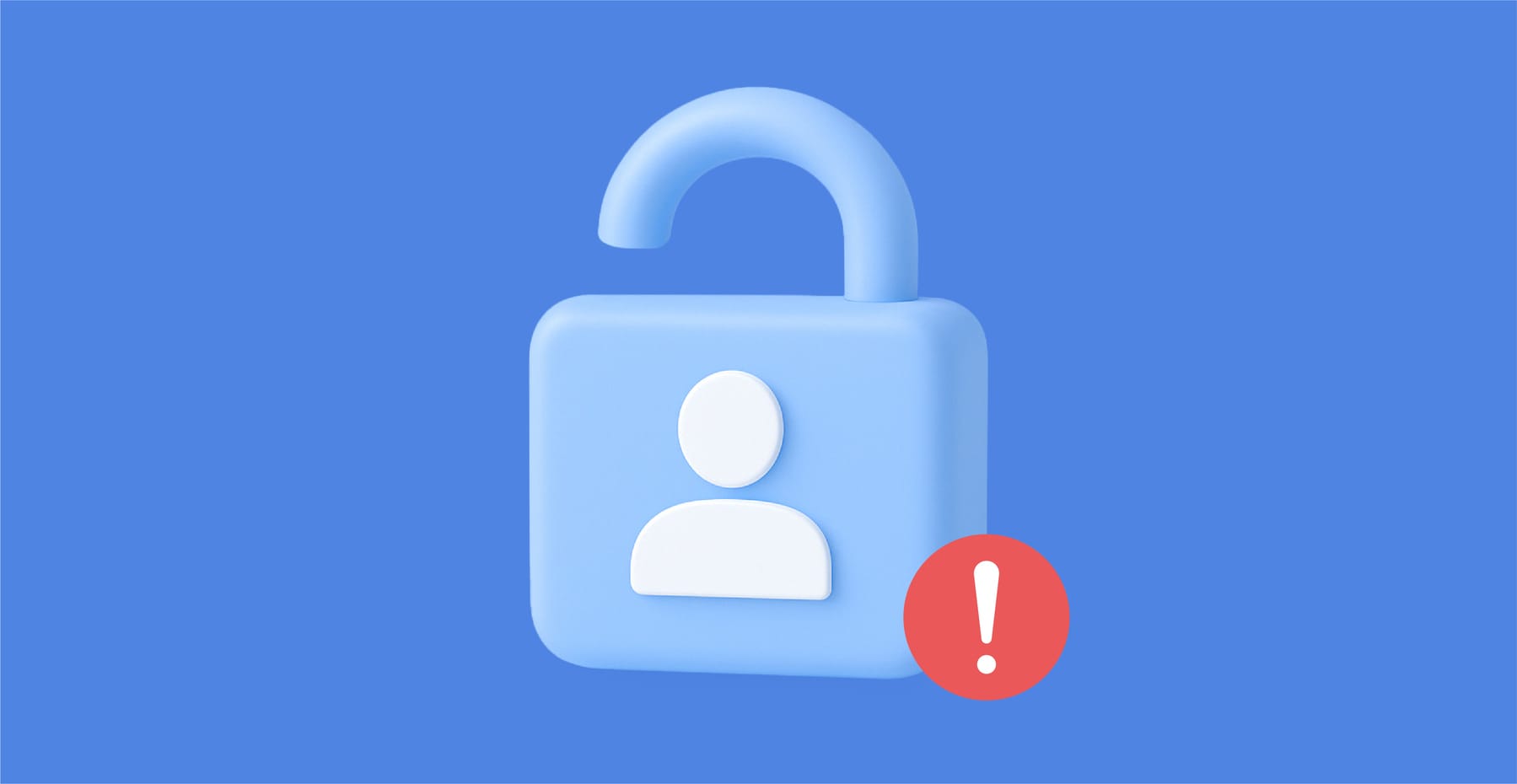
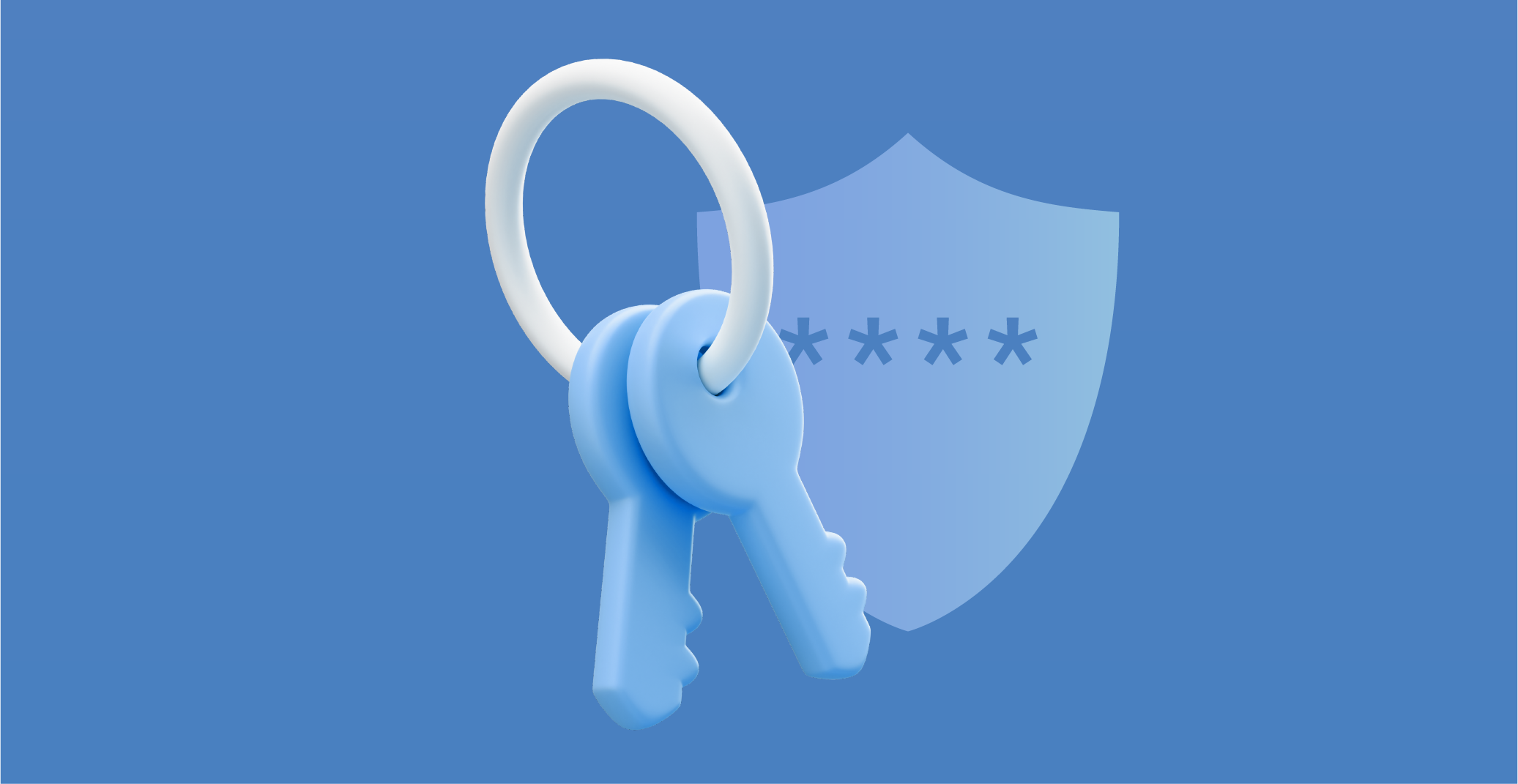
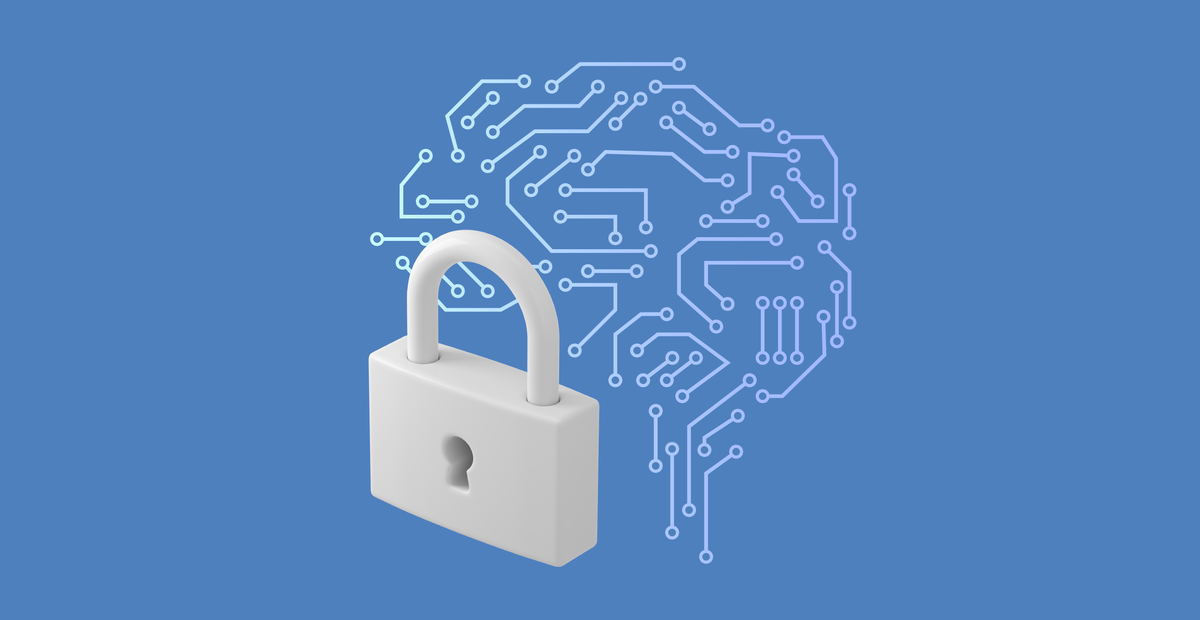
Сybersecurity checklist for small businesses

Table of contents
- Introduction
- The compliance trap: Why policies fall flat
- The real reason employees tune out
- Training vs. transformation
- Third-party risk: The unseen threat
- Password mismanagement: Still the weakest link
- Automating GRC without alienation
- Leadership role in building security-first culture
- Final thoughts
Introduction
Companies spend millions on cybersecurity policies — but often overlook the human side of enforcement. Why do employees ignore security rules, even when they’re clearly defined and regularly updated? And how can organizations shift from checkbox compliance to genuine behavioral change?
These were the big questions tackled in our latest Passwork cybersecurity webinar, featuring ISO 27001 consultant and ISMS Copilot founder, Tristan Roth. Together, we explored how companies can strengthen security culture, align leadership and compliance teams, and ultimately get employees to care about cybersecurity policies.
This article highlights the key insights from that discussion, offering a practical roadmap for businesses aiming to turn policy fatigue into proactive security awareness.
The compliance trap: Why policies fall flat
According to a 2024 ISACA survey, just 38% of organizations believe their compliance efforts have improved their actual security posture. The rest? Going through the motions.
They want to be ISO-certified in three weeks. They write 50 documents, sign them, and think the job is done. But there’s no substance. And without substance, there’s nothing to embed into company culture.
— Tristan Roth
Tristan noted that many companies pursue ISO 27001 purely for external reasons — sales pressure, vendor demands, regulatory requirements. But this "checkbox compliance" mindset often leads to rushed implementations, shallow training, and policies that nobody reads.
That’s precisely why meaningful certifications stand out. As a case in point, Passwork itself recently achieved ISO/IEC 27001:2022 certification — a milestone that underscores our commitment not just to technical excellence, but to real, operational security practices. You can view the certification details here. For us, it’s not about the certificate on the wall — it’s about living the standard in our day-to-day approach to product design, customer trust, and internal controls.
The real reason employees tune out
It's easy to blame employees for ignoring security policies. But in many cases, they’re not wrong to do so.
Tristan described how companies often copy-paste policy templates from the internet without adapting them to their specific context. A policy meant for
a university might get handed to a startup team. A remote work rule might ignore hybrid realities.
If a policy obviously doesn’t reflect your real work environment, of course employees will skip it. They know when no effort was made.
This disconnect between policy and reality creates distrust. Employees learn
to view documentation as bureaucracy, not guidance.
Training vs. transformation
Security training is everywhere — but it’s often treated like background noise.
Tristan emphasized that truly effective awareness programs require empathy, relevance, and context. Instead of one-size-fits-all e-learning modules, what works best is direct, human conversation. Sitting down with small groups. Tailoring sessions to different roles. Explaining why a policy exists, not just what it says.
Sometimes, the most effective approach is doing things that don’t scale. A 10-person training session can do more than a 2-hour video everyone skips.
This type of pedagogy isn’t flashy — but it changes behavior. It creates a feedback loop between employees and security teams that policy documents alone can’t.
Third-party risk: The unseen threat
In 2024, over 60% of data breaches were linked to third parties. Yet many organizations still conduct vendor assessments as a one-time task during onboarding — and never revisit them.
The companies I work closest with — I know the people. And if something changes, I can ask for proof, or pivot fast. That’s the mindset companies need to adopt.
Tristan warned against over-relying on surface-level due diligence. He stressed the importance of designating a responsible person (even in small companies) to build real relationships with vendors, revisit risk exposure over time, and keep alternative solutions in mind for business continuity.
Password mismanagement: Still the weakest link
According to Verizon’s Data Breach Investigations Report (DBIR), over 80% of hacking-related breaches still involve stolen or reused credentials.
Despite having password policies in place, many companies don’t monitor whether employees actually follow them. Shared passwords in messaging apps, weak variations of old passwords, or resistance to using MFA — these are all symptoms of convenience overriding policy.
A good password policy isn’t enough. You need to design systems assuming passwords will be compromised — and build defenses like MFA around that assumption.
Passwork and similar tools offer self-hosted or cloud-based solutions, but Tristan’s advice was clear: tools help, but they don’t replace responsibility. Compliance teams need to combine tech with empathy, audits, and clear communication.
Automating GRC without alienation
Automation can cut Governance, Risk management and Compliance (GRC) workloads by up to 60%, but it’s not a silver bullet. Poorly implemented tools can actually increase policy fatigue.
Some platforms take ten times longer than Excel. People go back to Excel — not because they don’t believe in compliance, but because the tool wasn’t built with their workflow in mind.
Instead of aiming for “full automation,” companies should focus on effective automation — solutions that reduce friction, not increase it. This means assigning a project owner, setting realistic expectations, and piloting changes before rolling them out at scale.
Leadership role in building security-first culture
Cybersecurity is often seen as an IT issue, but real change starts with leadership.
A recent PWC survey found that 80% of executives say they prioritize security — yet only 30% of CISOs feel supported. Tristan argued that this misalignment often stems from poor communication.
Security leaders need to speak the language of business. Not vulnerability management. Risk in financial terms. Loss potential. Mitigation cost. Impact.
CISOs must become translators — connecting security risks to business outcomes. When leadership understands the stakes in terms they care about, support and budget follow.
Final thoughts
Employees ignore cybersecurity policies not because they’re lazy — but because the policies feel irrelevant, the training feels generic, and the tools feel like obstacles.
Shifting that mindset requires a cultural transformation: from compliance to care, from documentation to dialogue. As Tristan put it, be the captain of your own security ship. Know your context. Use the tools wisely. But lead with empathy and clarity.
Further reading:


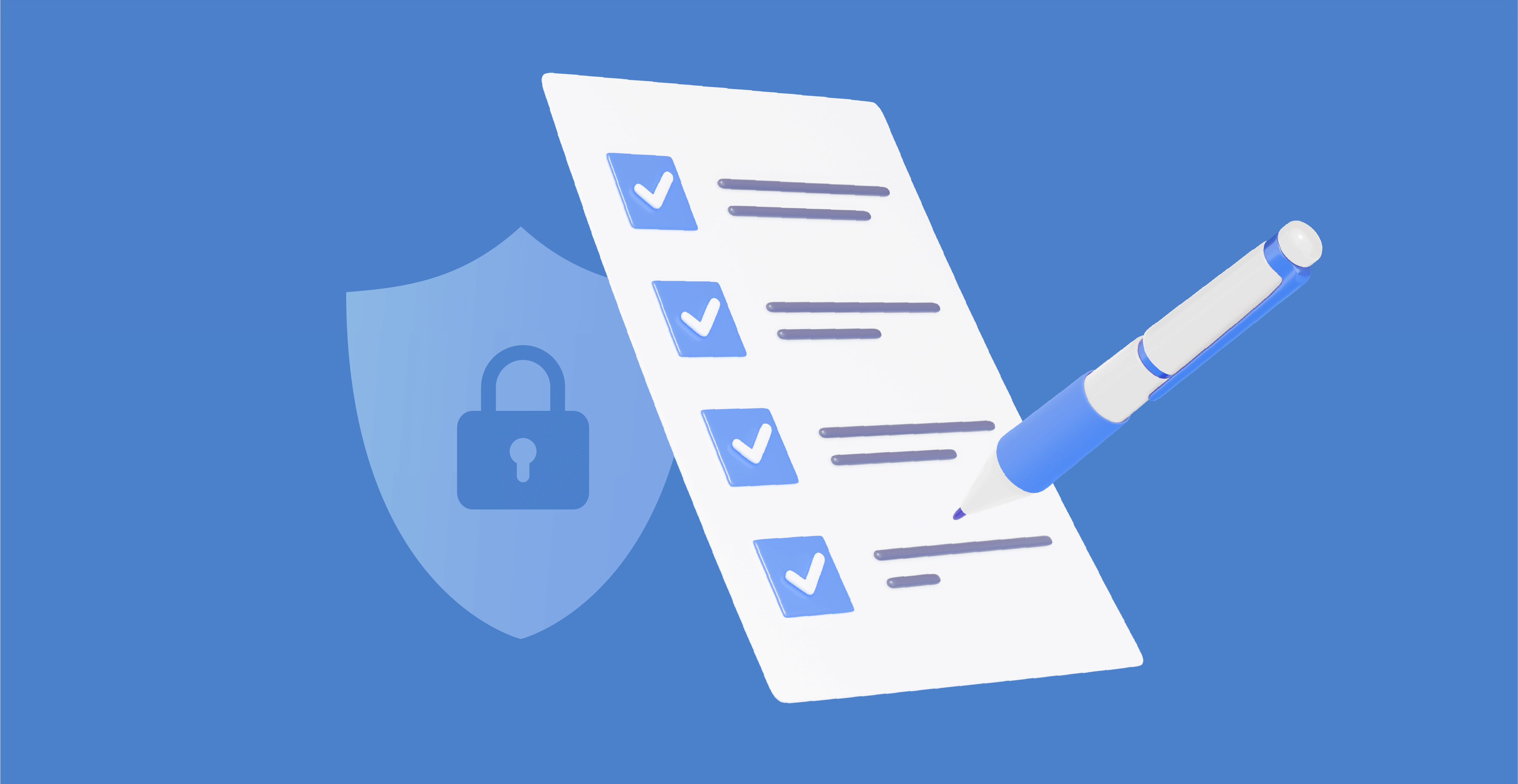
Why do employees ignore cybersecurity policies?

Table of contents
- What is the Advanced Encryption Standard (AES)?
- Where is AES encryption used?
- How AES encryption works
- Advantages of AES encryption
- Attacks on AES encryption
- How to prevent attacks on AES encryption
- How does AES compare to other encryption?
- How Passwork can help with encryption
What is the Advanced Encryption Standard (AES)?
The Advanced Encryption Standard (AES) is a method used to convert plain text into unintelligible code. This encrypted data can only be accessed by those who possess the proper key.
The United States government formally made AES its encryption standard during 2001. National Institute of Standards and Technology (NIST) selected AES to replace the outdated DES encryption system after conducting its evaluation. It is currently among the most dependable approaches for securing digital information.
What is unique about AES? It is quick, safe, and adaptable. 128, 192, or 256-bit keys may be used with it. The protection increases with the length of the key. But even the 128-bit version is considered very secure.
AES uses a symmetric encryption method. That means the same key is used to lock and unlock the data. Both sides must have the same key to communicate safely.
Governments, banks, and tech companies use AES every day. It guards emails, passwords, files, and even voice calls.
Where is AES encryption used?
AES encryption works discreetly behind the scenes, protecting your data every day. It keeps logins, online banking, Wi-Fi, and cloud storage. Mobile applications, communication tools like WhatsApp and Zoom, and cloud systems like Google Drive depend on AES. It’s embedded into USBs, SSDs, and cellphones to lock down data. Even if your gadget goes lost, AES keeps data protected. Businesses use it to preserve client details, emails, and personnel records. Governments trust AES too, making it important for securing sensitive data across both personal and professional contexts.

How AES encryption works?
AES scrambles your data via a technique called substitution and permutation. It might sound complex, but let’s break it down.
AES separates the data into generally 128-bit long small blocks. It then sends each block through a sequence of steps called rounds. The number of rounds depends on the key size:
- 10 rounds for 128-bit
- 12 rounds for 192-bit
- 14 rounds for 256-bit
Each round updates the data using mathematical operations. It mixes stuff up, substitutes bits, and changes components around. The key guides this entire process — without the appropriate key, the result appears like random garbage.
This is where AES excels. The same procedure is used to encrypt and decrypt. You simply reverse the steps using the same key.
Because it employs a block scheme, AES operates rapidly. It’s also less likely to break down if a tiny element is modified or lost. That’s why it’s perfect for huge files and streaming.
To put it simply, AES transforms your communication into a puzzle. Without the key, the components won’t fit.
Advantages of AES encryption
Globally, AES encryption is trustworthy, rapid, and strong. It’s one of the most secure methods for protecting information, which is why banks, governments, and major tech companies use it every day.
One major win? Speed. AES operates quickly on both small and large files. It runs nicely even on minimal hardware. That means it won’t slow things down — even while encrypting huge amount of data.
Security is another significant advantage. AES employs complicated keys and several rounds to scramble information. Hackers can’t break it without huge computational power. And even then, it would take thousands of years.
Flexibility matters too. AES offers three basic key lengths: 128, 192, and 256 bits. You can choose the degree of security suited for your scenario — longer keys give greater protection.
It’s also extensively embraced. Since it’s a worldwide standard, most tools and platforms support it. That makes integration simpler. You don’t need to develop anything from the start.
Plus, AES is efficient. It requires less system resources than some previous approaches. That saves power on mobile devices and keeps systems working smoothly.
Attacks on AES encryption
AES is challenging to penetrate. Still, attackers continuously attempt new techniques. Instead of breaking the math behind AES itself, they usually target the systems that use it.
One such way is side-channel assaults. These don’t touch the algorithm itself. Instead, they monitor how it operates. Think power utilization, timing, or electromagnetic leakage. It's like eavesdropping on someone inputting a password, not breaching the lock.
Another option is the brute force assault. This requires testing every key until one fits. For AES-128, that’s 2¹²⁸ combinations. It’s an extremely large number—just to give you an idea, it’s much more than the number of atoms in the observable universe. Even the fastest computers would require billions of years. Simply, it’s just not practical.
Some go target weak passwords instead. AES may be strong, but a lousy password may shatter everything. It’s like putting a cheap lock on a bank vault.
Then there’s the related-key assault. It’s unusual and only works if attackers know specific details about the keys. With effective key management, this attack is virtually worthless.
Sometimes, hackers utilize key recovery attacks. They attempt to find out the encryption key by examining trends or flaws in how data is handled.
These assaults don’t indicate AES is weak; they merely illustrate that security isn’t about one single component. It's about the complete picture. The configuration, the keys, the users — each plays a crucial role.

How to prevent attacks on AES encryption
Even the toughest lock requires a clever owner. AES is strong, but wise usage makes it secure.
First, use strong, unique passwords. Don’t reuse them. Don’t make them simple. A good encryption system with a weak password is like closing your door and putting the key under the mat.
Next, safeguard your keys. Don’t store them with your data. That’s like placing your combination lock and the code in the same drawer. Use separate, trustworthy key management tools.
Keep your software updated. Old systems may contain faults or weaknesses that attackers already know. Patches heal the flaws. Skipping updates gives hackers a head start.
Watch out for side-channel leakage. If attackers can read power utilization or timing, they may put things together. Devices processing AES should have protection against these signals.
Don’t forget access control. The castle's keys are not necessary for everyone. Limit who can see or utilize sensitive data.
Also, avoid copy-paste security configurations. What works for one system may not suit yours. Understand your requirements, then pick the proper settings.
How does AES compare to other encryption?
AES stands tall in the encryption world. But how does it compare to others like RSA and DES?
First off, AES is symmetric. That means the same key is used to lock and unlock data. It's fast and works great when both parties already know the key. RSA, on the other hand, is asymmetric. It uses a pair of keys: one public, one private. It's slower but better for situations where users don’t share a key ahead of time like email encryption.
Now, DES used to be the big boss. But it's way too weak now. Hackers can crack it in hours, maybe less. AES replaced it because it’s faster, safer, and designed to last.
What makes AES shine is its balance, strong security, quick processing, and wide use. It runs smooth on most devices and doesn’t eat up system power like RSA. That’s why it’s popular in banking, Wi-Fi, and cloud apps.
RSA still has a place, especially for secure key exchanges. But once the keys are shared, AES usually takes over.
Using RSA acts like a bodyguard giving you the key to access a protected space implemented through AES encryption.
AES provides greater encryption security than original encryption systems such as Blowfish and Twofish. Users benefit from its global-wide tested, trusted, and authorized security approval.
AES-128 vs. AES-256
AES encryption includes three key variations which are explained through 128, 192 and 256-bit measurement systems. AES-128 and AES-256 represent the primary opposition group of encryption standards. AES-128 employs a 128-bit key. AES-256 uses a 256-bit key.
Simple, right? The key length directly affects the strength of the encryption, which is what distinguishes these two variations. Taking longer key lengths enables hackers to face increased difficulty when trying to predict potential combinations. AES-256 offers a key selection capacity 2¹²⁸ times greater than AES-128 does. That’s not just bigger, that's gigantic.
But here’s the twist. AES-128 is still quite secure. Experts have yet to break the code, even with the power of supercomputers attempting to crack it. The algorithm runs quickly and consumes minimal power, making it ideal for mobile devices and real-time applications.
AES-256 gives further levels of safety. The encryption shows resistance to force-based attacks while delivering maximum protection against complex threats. Government and military organizations implement AES-256 because the extra security level exceeds their requirements.
So, which one should you use? Consider AES-256 as your protection choice if you need the highest level of encryption security. AES-128 provides sufficient protection to secure most typical applications when one considers both speed and security performance. Deciding between armed tank protection and bulletproof vehicles represents the choice between AES-256 and AES-128 cryptographic protocols. Both protect you. One is simply more robust.
Bottom line? AES-128 is quick and powerful. At the same time AES-256 provides maximum strength yet operates at slightly reduced speed. The selection should rest on your specific needs regardless of any exaggerated claims.
AES vs. RSA
AES and RSA both provide strong data protection, but they operate in fundamentally different ways.
AES is symmetric encryption — fast, efficient, and perfect for large files or real-time communication.
RSA is asymmetric. This cryptographic system requires two specific keys where one remains public for encryption purposes and the second remains private for decryption functions. People can provide encrypted content like putting letters in a mailbox yet only the mailbox owner possesses the required key for decryption.
AES encryption operates at speeds much higher than those of RSA encryption. The majority of systems first use RSA to distribute the AES key before they transition to AES operations. The system works similar to RSA which opens the door before AES handles all the cleaning operations within.
RSA is ideal for secure key exchange, especially over open networks like the internet. But it's slow for large data. Very slow.
AES shines when speed matters. It’s built for bulk encryption files, hard drives, apps, you name it.
So, which is better? Neither. They do different jobs. In fact, most secure systems use both together. RSA to safely share the AES key. AES to encrypt the actual data.
AES vs. DES
AES and DES are both encryption standards, but they’re not on the same level. DES came first. It was developed in the 1970s. Back then, it was a big deal. It protected sensitive data for decades. But times changed. Hackers got smarter. Computers got faster. And DES started to fall apart.
DES uses a 56-bit key. That sounds fine until you realize how easy that is to crack today. A regular desktop computer can break DES in hours. A powerful system? Minutes. That’s not good enough anymore.
AES came in to fix that. It uses key widths of 128, 192, or 256 bits. That’s a massive upgrade. AES isn’t just harder to break, it's practically impossible with today’s tools. That’s why banks, the military, and even WhatsApp trust AES.
There’s also speed. DES works with 64-bit blocks, while AES handles 128-bit blocks. AES encrypts more data at once and does it faster. DES feels like a typewriter in a world of smartphones.
In simple terms: DES is outdated. It’s like using a flip phone when you could have a secure smartphone. AES isn’t just better. It’s safer, smarter, and future-proof. If you care about security, there’s no real debate.

AES encryption FAQ
Is AES symmetric or asymmetric?
AES is a symmetric encryption algorithm. The encryption process utilizes a single key which performs the decryption operation as well. The system functions by utilizing a solitary key both for encryption and decryption processes. The system enables rapid execution for encrypting files and networks alongside message protection since it depends on existing shared keys between users. Symmetric systems like AES are usually faster than asymmetric ones, but the trick is safely sharing that key. If someone steals the key, they get access. That’s why key management is super important with AES.
What is AES 128 vs. 192 vs. 256?
The key sizes measured in bits include numbers ranging from 128 to 192 and 256. Extended keys become harder to break. AES-128 is already extremely secure. Higher security levels come from AES-192 and AES-256 — yet they operate at a slightly reduced speed. A majority of systems choose AES-256 because of its exceptional security features. The padlock analogy applies where AES-128 represents strong security while AES-256 functions at Fort Knox level of protection. Each AES version maintains a constant block size of 128 bits alongside unchanged basic building components while adding additional rounds of complexity through larger key lengths.
Is 128-Bit AES secure?
Yes, AES-128 is very secure even by today’s standards. It would take billions of years to brute-force with current tech. While some organizations prefer AES-256 for extra strength, AES-128 has never been broken. It’s still widely used in apps, websites, and devices. Unless someone invents a quantum computer that works like magic, AES-128 isn’t going anywhere. It’s fast, reliable, and strong enough for almost any purpose.
Is AES the best encryption method?
For most uses? Yes. AES is the gold standard. It’s trusted by governments, banks, and tech companies worldwide. It’s fast, secure, and flexible. That’s hard to beat. It’s not perfect for everything, though. For secure email or digital signatures, asymmetric methods like RSA work better. But for locking down files, networks, or apps? AES takes the crown. It’s been tested, approved, and trusted for over two decades and still going strong.
How Passwork can help with encryption
Keeping passwords safe is tough. You probably have dozens, maybe even hundreds of them. And when they’re scattered across random locations, it’s a disaster waiting to happen.
That’s where Passwork comes in. A password vault is a secure storage system that protects your sensitive information in one safe location. AES-256 encryption secures everything, using the same standard trusted by banks and governments. So, yeah, it’s solid.
But Passwork doesn’t stop at security. It also makes your life easier. You don’t need to memorize every login. Just store it once, and boom it's always there when you need it. Need to share passwords with your team? You can do that safely without sending anything over chat or email. No more “What’s the Wi-Fi password again?” moments.
Passwork also puts you in control. You decide who gets access, when, and to what. You can see logs of who accessed what and when. Plus, you can view logs showing who accessed what and when. It’s peace of mind for IT admins and managers.
And let’s not forget backups. Passwork keeps your data synced and safe. If something goes wrong, you’re not stuck. Your passwords are still locked down and ready to go.
Further reading:
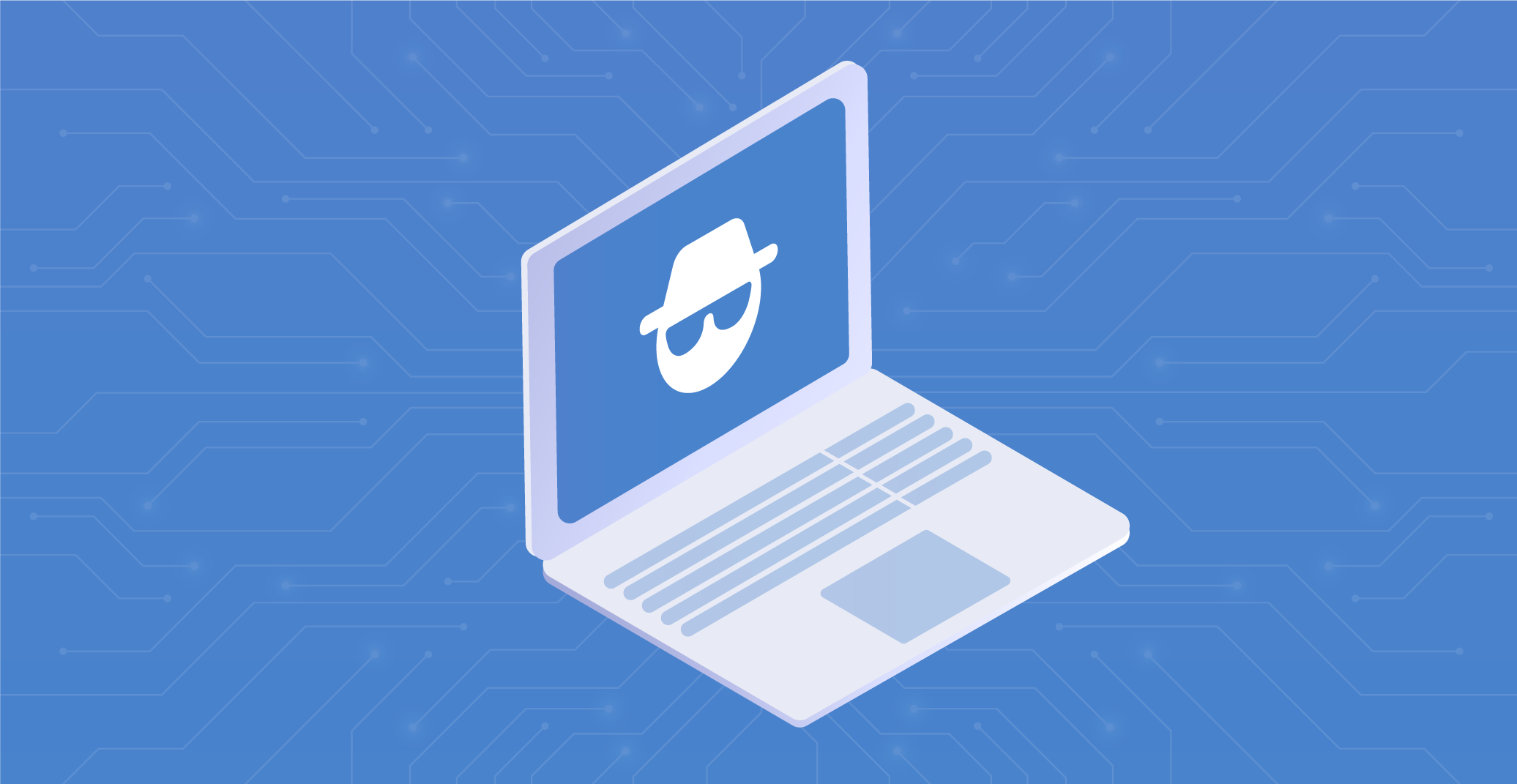

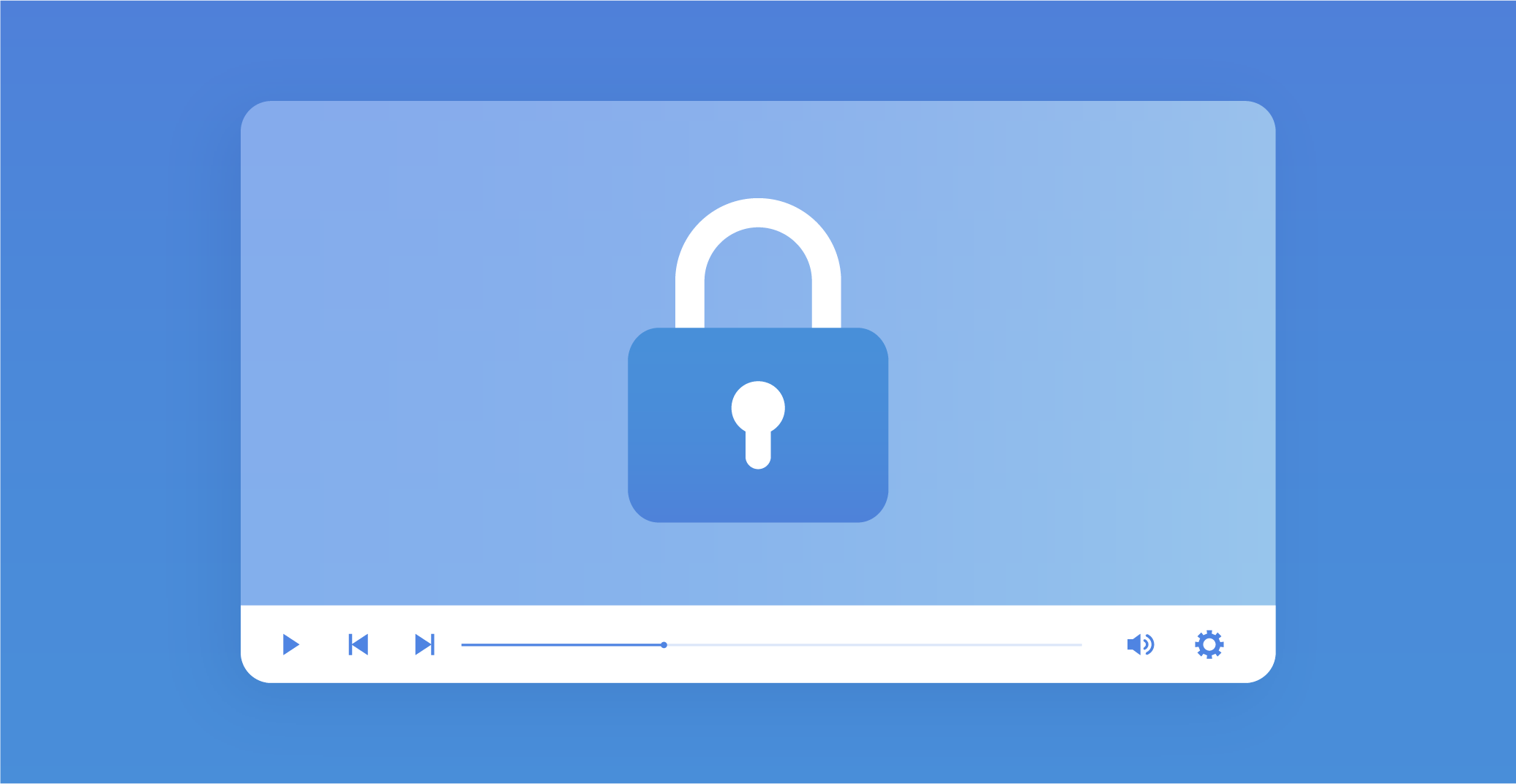
What is the Advanced Encryption Standard
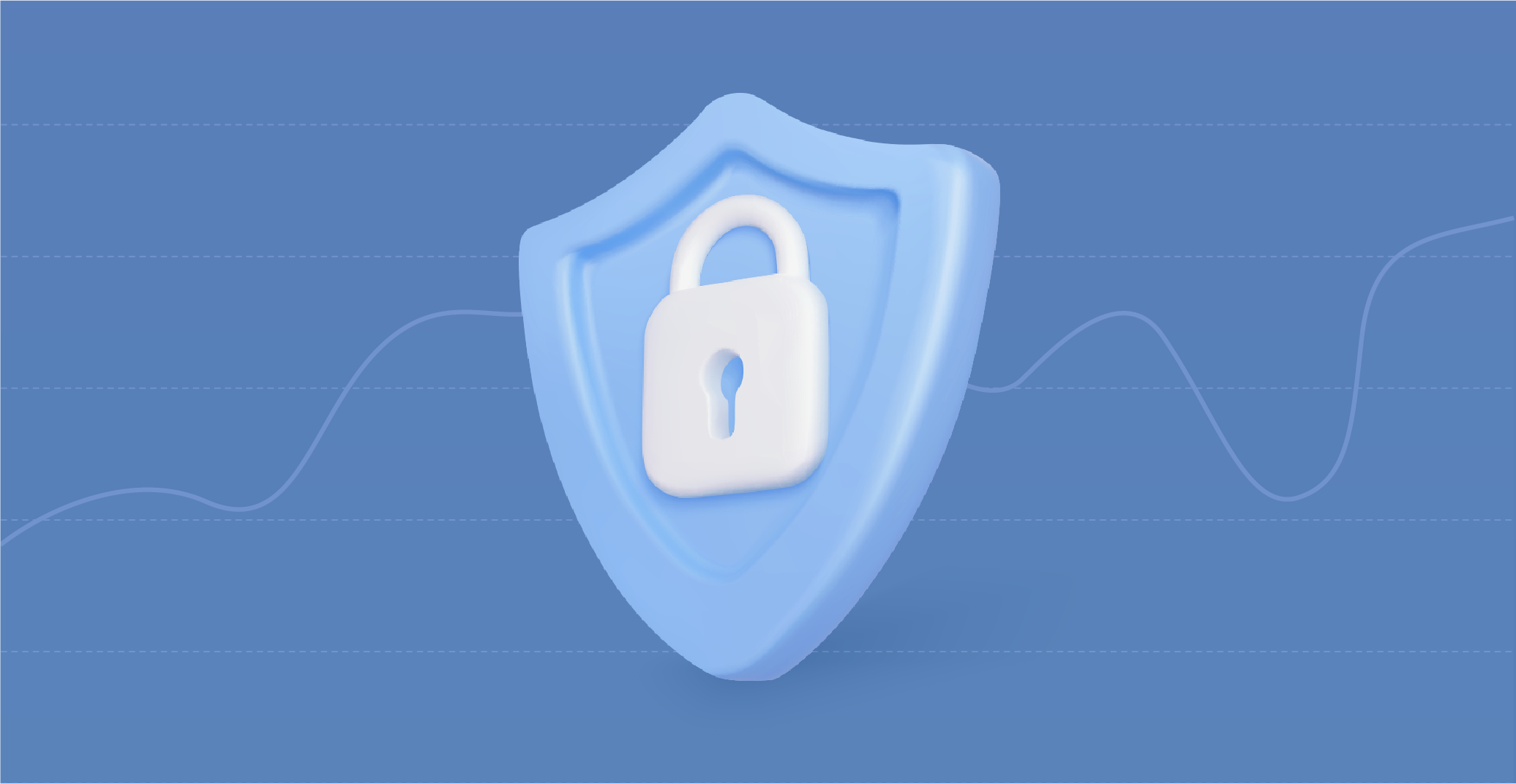
Table of contents
- Introduction
- What is a cybersecurity risk assessment?
- The importance of cyber risk assessment
- Who should perform a cyber risk assessment?
- Common cybersecurity risks and threats
- How to perform a cybersecurity risk assessment
- Conclusion
Introduction
The surge of cybercrime involves attacks that continue to become more complex and expensive. Cybercrime experts predict that costs from cybercrime will reach $10.5 trillion by 2025 therefore cybersecurity risk assessments need to become more essential than before. Attacks against organizations occur through the abuse of weak networks alongside software flaws together with undetected human errors.
A cybersecurity risk assessment enables businesses to locate and solve security vulnerabilities which become devastating breaches unless addressed. When organizations omit this step they become vulnerable to ransomware intrusions as well as phishing attacks from inside their operations and non-compliance issues arise. The 2017 Equifax breach revealed 147 million records because an updated vulnerability remained unpatched. This guide explains cybersecurity risk assessments while showing their significance and offers proper execution directions.

What is a cybersecurity risk assessment?
The definition of a cybersecurity risk assessment involves identifying and reducing potential threats against IT systems data and operational environments.
The goal of a cybersecurity risk assessment is to help organizations detect and lower the risks impacting their IT systems together with their data and operational functions. Modern cybersecurity threats demand active protective security measures to prevent potential audience points of weakness.
Key components of a cybersecurity risk assessment
Risk identification
Identifying Cyber weaknesses in systems, software, networks, and employee practices a cybercriminal can exploit.
Risk analysis
Assessing the impact that these threats can have on the business continuity, finances, and regulatory compliance.
Risks mitigation
Take cybersecurity mitigations like firewalls, encryption, MFA (multi-factor authentication), and user training.
Risk monitoring
Updating and improving security strategies to adapt to changing cyber threats, including keeping up with compliance requirements such as NIST, ISO 27001, GDPR, and other cybersecurity data compliance regulations
Analogy: Cybersecurity risk assessment is like a home security audit
Imagine your home. You wouldn’t leave the doors unlocked or overlook vulnerable entry points that could be used by intruders to gain access. You wouldn’t leave your door unlocked, though: you’d put in locks, security cameras and an alarm system so that no one could break in. Just like how risk assessments in cybersecurity allow businesses to discover and fix gaps in their digital defenses before they can be exploited by hackers.
The risks of neglecting cyber risk assessments
Failing to perform routine assessments for cybersecurity related risks makes organisations vulnerable to data breaches, financial loss, damage to reputation, and fines. There are had cybercrimes, including ransomware, phishing, and insider threats, that's steal customer information and grind operations to a halt.
Assessment and strengthening of security defenses are measures which protect sensitive data and keep modern business up and running, hence minimizing risk for companies.

The importance of cyber risk assessment
Organizations today must perform cyber risk assessments since they are a mandatory requirement. The absence of consistent assessment puts businesses at risk of losing data confidentiality through breaches and operational interruptions while harmful damage occurs to their public image. Security maintenance along with stability depends directly on discovering and solving vulnerabilities.
Why businesses must conduct cyber risk assessments
Preventing financial losses
Cyberattacks can have severe financial consequences, with the average data breach costing up to $4.45 million. This includes expenses for system recovery, legal fees, reputational damage, and customer loss (IBM Cost of a Data Breach Report, 2023). Regular security audits and risk assessments help businesses detect vulnerabilities early, preventing costly breaches and saving significant resources.
Ensuring business continuity
Cyberattacks don't just compromise data; they can bring business operations to a standstill, resulting in extended downtime and revenue loss. A ransomware attack, for example, has the potential to lock businesses out of critical systems for days or even weeks. Businesses can establish safety protocols at the outset to minimize the blow when a sucker punch comes in the form of a cyberattack.
Avoiding legal penalties & compliance violations
Established security regulations require multiple sectors to take specific actions including:
● NIST Cybersecurity Framework
● CISA Cybersecurity Risk Assessment Guidelines
● ISO 27001 Information Security Standard
● GDPR & HIPAA Data Protection Laws
Non-adherence to regulations results in both significant court actions and hefty fines together with potential damage to public image. Businesses that conduct cyber risk assessments on a regular basis stay compliant with regulations thus preventing any potential legal consequences.
Who should perform a cyber risk assessment?
A business can evaluate risks through dedicated IT personnel or by contracting with external cybersecurity firms.
Internal IT teams vs. third-party assessments
Internal IT teams
Suitable for companies with a dedicated cybersecurity team. Internal IT staff members reduce costs but typically have fewer advanced assessment capabilities at their disposal. Companies conducting security evaluations through their own staff members risk introducing personal preferences that might affect the evaluation results.
Third-party cybersecurity firms
The company should present independent professional cybersecurity knowledge for conducting threat evaluations. Companies benefit from receiving both advanced security technology together with the most recent threat intelligence information. Level of precision along with objectivity rises significantly yet costs more money. Third-party cybersecurity services provide small businesses that have limited resources with thorough security risk assessments which are also conducted without bias.
Different approaches to cyber risk
An organization can execute cyber risk assessments by hand or through programmed systems which provide both pros and cons for each method.
The direct assessment method allows internal IT groups or external cybersecurity companies to perform detailed evaluations but demands experienced personnel along with prolonged examination durations. The approaches deliver specific results that could contain mistakes due to human factor involvement.
Cyber risk assessment tools perform automated scans on vulnerabilities at high speed because of their automated nature. The automated assessment method delivers time and cost effectiveness although it lacks the contextual knowledge that manual assessment provides.
Organizations team up these two risk assessment approaches to achieve full visibility into potential threats to their cybersecurity posture.
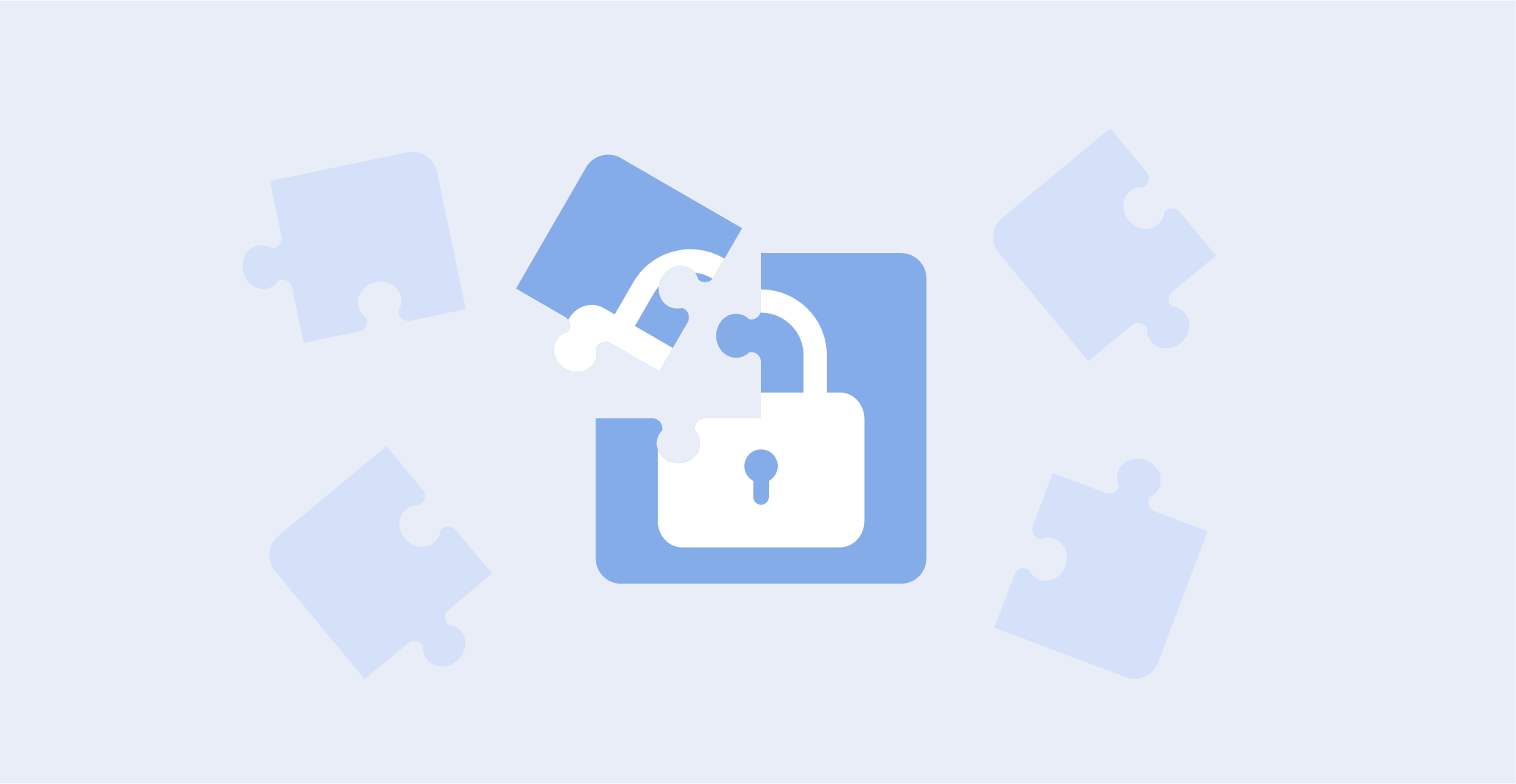
Common cybersecurity risks and threats
● Hackers stealthily access systems using malicious software programs to steal vital information that they hold hostage as ransom. WannaCry ransomware conducted a worldwide attack on 200,000 machines which led to massive disturbances together with substantial monetary damages.
● Cybercriminals use social engineering tactics along with phishing to obtain confidential employee information. The 2020 Twitter system breach occurred when employees fell victim to a phishing scheme that led to the system compromise.
● The organizations experience data breaches when employees together with third-party business associates and contractors either by mistake or deliberately reveal confidential information.
● Software vulnerabilities become targets for attackers at security holes that will not receive fixes before their launch.
● Numerous companies encounter cloud security issues due to their inability to protect cloud-stored sensitive customer information.
How to perform a cybersecurity risk assessment
The process of performing a cybersecurity risk assessment enables organizations to find system weaknesses while stopping possible internet threats. To evaluate successfully you should follow these provided steps.
Determine the scope
Establish which information systems along with data and external vendors require assessment consideration. Organizations should follow compliance standards that include NIST and ISO 27001 as well as HIPAA and the GDPR.
Identify and prioritize assets
Organizations should place assets within categories depending on their different risk rankings:
● Critical: Customer databases, financial records, intellectual property
● Medium: Internal emails, login credentials
● Low: Archived data, public website content
Identify cyber threats and vulnerabilities
Determine which vulnerabilities hackers can use against your assets including ransomware malware along with phishing attacks. Results of penetration testing and vulnerability scanning help organizations detect their risks.
Assess and analyze risks
Assess every menacing factor through past scenario occurrences and industry-established benchmarks. Data security breaches trigger multiple adverse effects that include monetary losses alongside operational interruptions together with damage to company reputation.
Calculate risk probability and impact
Evaluate and categorize risks using qualitative analysis in order to determine their level (low, medium, high) as well as their potential financial consequences.
Prioritize risks with cost-benefit analysis
Allocate resources efficiently. Clients should invest in multiple-step authentication security measures to handle a $5M ransomware risk.
Implement security controls
Deploy firewalls, MFA, and encryption. The protection value improves when maintaining regular software updates and performing security audit inspections.
Monitor and document results
Security assessments need to run continuously and annual checkups need to function alongside incident log maintenance for following compliance protocols.
Benefits of cybersecurity risk assessments
Security risk assessments act as defensive tools which protect a company from cyberattacks while enabling companies to follow regulations and fortify their defenses leading to data protection and protecting them from expensive breaches.
Conclusion
Security risk assessments should take place habitually because they detect vulnerabilities and stop attacks and maintain regulatory conformity. Companies need to take proactive security measures because cyber threats continue to change without any possibility for choice. Regular assessment practices allow businesses to create stronger defensive measures for their data protection and evade damaging data breaches. A long-term defensive position comes from continuous security monitoring together with employee training as well as enhanced cybersecurity tools. Security strategies deliver protection through preparedness as much as through defense initiatives. The current investment in cybersecurity defenses by businesses ensures their success in facing future risks. The regular performance of assessments will both protect your business from cyber threats and guarantee your preparedness regarding new security risks.
Further reading:


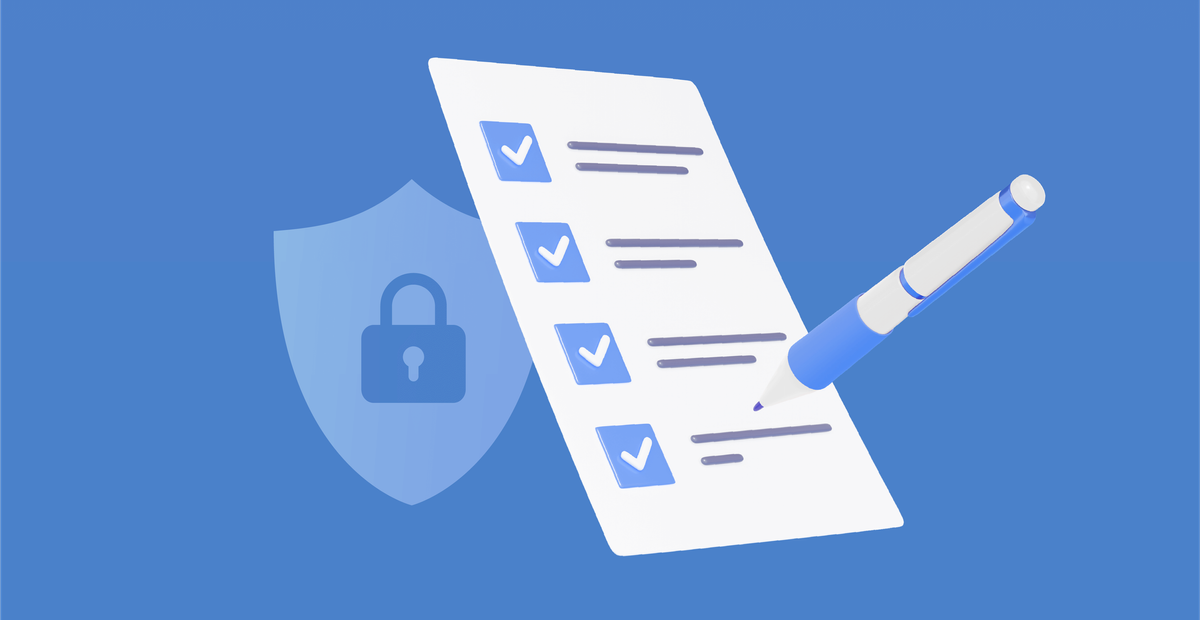
What is a cybersecurity risk assessment?

Digital security demands the highest possible protection for passwords due to modern advances in digital presence. For effective password security people need to understand that cybercriminals have developed intricate ways to break passwords. The lack of password security foundation has resulted in many notable data breaches which released vital customer information and created severe financial losses together with reputation damage for companies.
The application looks into password security approaches through salting and peppering because they protect user credentials effectively. The paper explores implementation recommendations as well as a review of authentication strategies in present-day cybersecurity and emerging authentication trends.
Understanding password hashing
The core component for safe password protection rests in password hashing. System administrators use cryptographic hash functions to hide passwords by converting them into stable computational outputs known as hash codes. Hash values cannot be reversed to reveal the original password information after a transformation completes. The protection of passwords remains strong in case database systems fall victim to an attack.
Common hashing algorithms
Multiple cryptographic hash functions provide password security as part of their standard practice.
● SHA-256 functions as a safe hashing system that executes cryptographic applications with security as its primary priority. SHA-256 (Secure Hash Algorithm 256-bit) belongs to the SHA-2 standard of cryptographic hash functions. The Merkle-Damgård construction enables this system to split data into 512-bit blocks. The compression function inside this algorithm uses bitwise operations where XOR, AND, NOT, and shifts generate a 256-bit hash value. The security level of SHA-256 is solid but it fails to offer native defense against brute-force attacks so it cannot be used directly on passwords without salt insertion. The cryptographic method suffers from attacks that expand the input length.
● The adaptive function and automatically generated random components of BCrypt protect against brute-force attacks to establish superior password storage protection. BCrypt operates with Blowfish cipher technology while its cost factor controls the difficulty of the hashing procedure execution. The adjustment of cost factors allows for extending hash computation time which raises the cost of brute-force attacks both in time and resources. The security is improved through automatic BCrypt-generated salts designed for individual passwords.
● Argon2: A modern, memory-hard algorithm designed to be resistant to brute-force attacks by making hash computation resource-intensive. Argon2 has different variants like Argon2d, Argon2i, and Argon2id. Argon2d maximizes resistance against GPU-based cracking attacks by using data-dependent memory access. Argon2i is optimized to resist side-channel attacks by using data-independent memory access. Argon2id is a hybrid mode that combines the advantages of both Argon2d and Argon2i. It leverages memory-hard functions to resist side-channel attacks and GPU-based cracking, making it a robust choice for password hashing.
Hashing alone, however, is not sufficient because attackers can precompute hashes using dictionary attacks and rainbow tables. The process of salting and peppering takes over at this point.
What is salting?
The cryptographic method called salting enhances password hash security through its implementation. In the encryption process programmers introduce a unique random string called salt which they put before running the password through a hash function. Security salts stop cyber attackers from using precomputed tables called rainbow tables for password cracking.
Benefits of salting
- A proper salting process stops identical passwords from producing identical hash values because attackers find it simpler to identify patterns in passwords that match.
- The addition of salts defeats rainbow table attacks since they make computational password cracking via precomputed hash tables virtually impossible.
- Strong hashing techniques together with individual password salts improve security through their ability to make attacks on different hashes impossible by using the same methods.
Best practices for salting passwords
- Security demands each password to have its own unique salt.
- Salts need to be placed in separate storage locations from posted hashes in order to protect user data from database breaches.
- High-Entropy Salts are effective because their randomly created lengthy format decreases susceptibility to brute-force attempts. A password salt has unpredictable characteristics when its entropy level is high.
- A 128-bit salt possesses such a great amount of randomness that guessing its value becomes virtually impossible.
- The generation of salts requires using crypto-secure pseudo-random number generators (CSPRNGs).
- Sustainable security comes from implementing complex Hashing Algorithms which include Argon2 and bcrypt among others; these methods demand high computing power from attackers.
- The maintenance of security practices requires periodic evaluation and upgrade of password storage procedures in order to anticipate and counter new security threats.
What is peppering?
Pepper differs from salt by adding a hidden key (pepper) which secures passwords during hashing operations. A pepper serves as an additional security measure because unlike salt which stores password hash values it stays independent from database access.
Benefits of peppering
- A stolen database remains insecure because penetration requires access to the protected pepper.
- Separating the pepper from the database provides protection against unauthorized password decryption because database exposure is insufficient to complete password cracking.
- The integration of a pepper element makes brute-force attacks much more difficult because attackers lack the required information to execute system wide hash testing.
- Most automated attack scripts become less effective since they do not consider unknown pepper values in their standard operations.
Challenges of peppering
- The storage location for the pepper needs to be separate from other data in a protected environment variable or hardware security module.
- A compromised pepper poses a risk to decrypt all passwords which use that pepper whenever it gets exposed.
- Organizations must replace their keys on a regular basis to decrease this security risk.
- Organizations need to periodically change their peppers as part of their management requirements while maintaining hash integrity during replacements.
- Proper implementation of peppering demands strategic approach because it needs to preserve efficient and scalable authentication procedures.
How salting and peppering work together
Security of passwords improves through the simultaneous application of peppering and salting techniques. A combination of salting provides unique hash values and peppering creates an added defense against potential attacks.
Users go through this process to create a password by using the following steps:
- A new specific salt emerges which gets added following the password.
- The pepper is applied as a secret addition to the combination of salted password.
- A strong algorithm performs the hash operation on the final combined string.
- Database storage houses both the combination of salt and hashed password but the system maintains exclusive control of the pepper data.
- The combined security measures elevate password defense to such high levels that attackers would struggle to obtain undisputed passwords even after breaching the database.
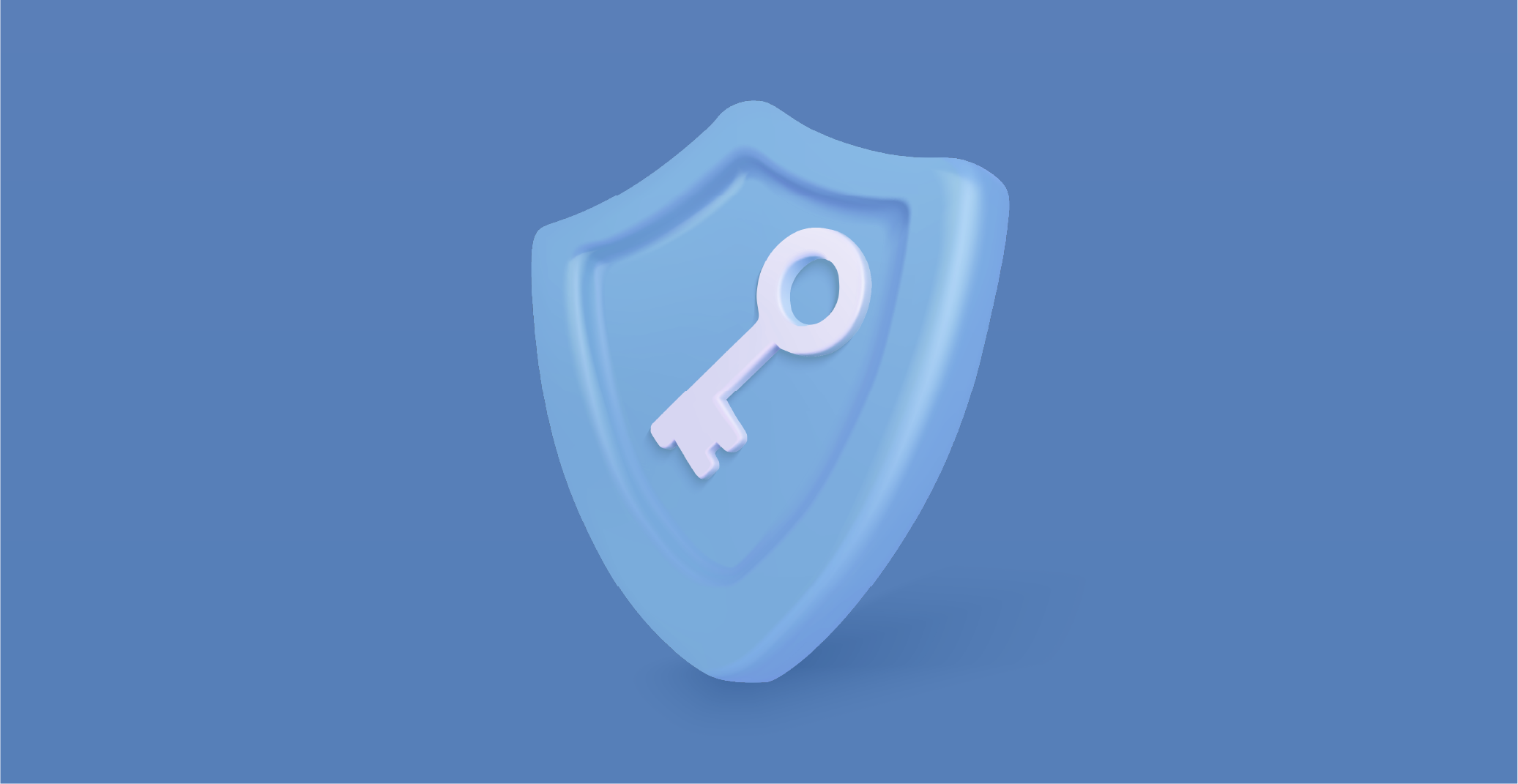
Best practices for implementing salting and peppering
- Use unique salts: Each password should have its own unique salt to maximize security. Store salts in a separate database column from password hashes.
- Strong hashing algorithms: Implement industry-recommended hashing functions such as bcrypt, Argon2, and PBKDF2.
- Secure pepper storage: Peppers should be stored independently from the database, such as in environment variables or a Hardware Security Module (HSM) for added protection.
- Regular pepper rotation: Schedule periodic updates for peppers and encourage users to change their passwords when necessary.
- Multi-factor authentication (MFA): Enhance security by requiring additional authentication factors beyond passwords.
- Regulatory compliance: Ensure compliance with security standards like GDPR, NIST, and PCI DSS to protect against breaches.
- Account protection measures: Implement failed login attempt limits and automatic account locks to prevent brute-force attacks.
- Ongoing security audits: Regularly evaluate authentication and storage methods to detect and mitigate vulnerabilities.
- User education: Encourage strong password creation using passphrases and password managers while promoting awareness of password security risks.
User education and password management
- Each password requires its own individual salt creation to achieve maximum security level.
- Storage of salts should be done in their own database column which must remain apart from the password hash storage area.
- You should implement strong hashing functions which include bcrypt, Argon2 and PBKDF2 and other security hashing algorithms in your system.
- The pepper must exist independently from the database storage by placing it either in environmental variables or within an HSM (Hardware Security Module).
- The combination of security features in HSMs includes tamper-resistant storage and cryptographic key administration.
- Security measures should be enhanced through Multi-Factor Authentication (MFA) which adds extra authentication protocols.
- The combination of peppers should be replaced in scheduled rotations and you should change your passwords at needed times.
- Protecting passwords against security breaches requires businesses to meet requirements of GDPR, NIST and PCI DSS while implementing robust password security.
- Account security improves when system implements mechanisms that limit failed login attempts followed by automatic account locks.
- The evaluation of password security practices should happen regularly through security evaluations which detect weak points in methods used for authentication and storage.
- Users need to receive instruction about how to develop and store strong passwords through passphrases and password manager tools.
- Users must receive proper training about creating strong passwords to improve security.
- Creating passwords must start with developing complex alphanumeric passcodes that are different from each other and should avoid easy-to-guess passwords and grasp password reset danger points.
Compliance and regulatory landscape
Ensuring robust password security requires adherence to industry regulations such as GDPR, NIST, and PCI DSS. Key compliance measures include:
- Salting & hashing: Each password should have a unique salt stored separately from hashed passwords. Use strong hashing algorithms like bcrypt, Argon2, and PBKDF2.
- Secure pepper storage: Peppers should be stored independently, such as in environment variables or an HSM (Hardware Security Module) for tamper-resistant protection.
- Multi-factor authentication (MFA): Implement MFA to enhance security and prevent unauthorized access.
- Access control & monitoring: Enforce failed login attempt limits and automatic account locks to mitigate brute-force attacks.
- Regular security audits: Conduct periodic evaluations to identify vulnerabilities in authentication and storage methods.
- User education: Promote strong password practices, use of password managers, and awareness of password reset risks to minimize human error.
The Future of Password Security
New authentication methods become essential to combat evolving security threats despite existing added protection provided by peppering and salting. New trends in password security protection will include the following elements:
- Through biometric authentication people no longer need to use passwords because their fingerprints and face and behavior patterns serve as alternative access methods.
- Passwordless authentication: Provide more details on passwordless authentication methods like FIDO2 and WebAuthn. Public-key cryptography allows these technologies to authenticate users through passwordless authentication procedures.
- Zero-Trust Security Models conduct continuous user identity verification for protecting against security threats.
- The detection system uses AI algorithms to analyze suspicious login patterns for the purpose of preventing unauthorized entry.
Password security: Understanding salting and peppering

AI technologies are changing industries fast and most companies are already using or will use AI in the next few years. While AI brings many benefits — increased efficiency, customer satisfaction and revenue growth — its also introduces unique risks that need to be addressed proactively.
From reputation damage to compliance violations and cyber attacks, the consequences of poorly implemented AI systems are severe. The rise of cyber-physical systems, like autonomous vehicles, highlights the need to integrate robust safety measures into AI development and deployment.
So experts have created practical recommendations to help organizations navigate these challenges. These guidelines are designed to make sure AI systems are secure, reliable and aligned with regulatory and ethical standards so businesses can use AI safely and responsibly.
Key risks to consider
With AI being applied in so many areas, businesses need to consider many risks:
Risk of not adopting AI
This may sound counterintuitive, but assessing the gains and losses of AI adoption is key to understanding and managing other risks.
Regulatory compliance risks
Rapidly evolving AI regulations make this a dynamic risk requiring frequent reassessment. Beyond AI-specific regulations, organizations must also consider associated risks, like violations of personal data processing laws.
ESG risks
These include social and ethical concerns surrounding AI and risks of exposing sensitive information.
Risk of AI misuse
From silly to malicious use cases, users will use AI in unintended ways.
AI models and training datasets threats
Attackers will target the data used to train AI systems and compromise their integrity.
Company services integrating AI threats
These will impact the broader IT ecosystem.
Data security risks
The data processed within AI-enabled services may be vulnerable to attacks.
The last three categories encapsulate the challenges of traditional cybersecurity in complex cloud infrastructures: access control, network segmentation, vulnerability management, monitoring, supply chain security and more.
Aspects of safe AI deployment
Safe AI deployment requires a balanced approach that combines both organizational and technical measures. These can be categorized into the following areas:
Organizational measures
Employee training and leadership education. Educate staff and leadership on AI risks and mitigation tools so you have an informed workforce to manage AI challenges.
Supply chain security. Scrutinize the source of AI models and tools. Make sure all resources come from verified, secure providers to reduce vulnerabilities.
Technical measures
Infrastructure security. A robust security infrastructure is necessary, incorporating identity management, event logging, network segmentation, and advanced detection tools like Extended Detection and Response (XDR).
Testing and validation. Thorough testing ensures AI models comply with industry standards, remain resilient to improper inputs, and meet specific business requirements.
Bias detection and correction. Detecting and addressing biases, especially when models are trained on non-representative datasets, is key to fairness and accuracy.
Transparency mechanisms. User-friendly systems for reporting vulnerabilities or biases helps organizations to build trust and improve AI systems over time.
Adaptation and compliance
Timely updates and compatibility management. Structured processes for updates and compatibility are needed to keep up with the fast pace of AI evolution.
Regulatory compliance. Staying aligned with emerging AI laws and regulations is an ongoing effort, requiring dedicated resources to ensure compliance with latest standards.
Practical implications
Deploying AI means focusing on risk management and security. Identifying vulnerabilities early through threat modeling allows businesses to address potential issues before they become problems. This proactive approach reduces the likelihood of costly mistakes and ensures smoother integration of AI systems.
A secure infrastructure is equally important. By implementing strict access controls and continuous monitoring, businesses can safeguard both their AI models and the IT environments they run in. Security measures must go beyond the models themselves, protecting the entire ecosystem that supports AI functionality.
Employee training plays a big role in responsible use of AI. Teams need to work effectively with these systems and leadership need to understand the risks and manage them. Proper preparation ensures a company-wide culture of accountability and awareness.
Thorough testing and validation of AI models are non-negotiable. These processes ensure that the systems perform reliably under different conditions and align with ethical standards. Testing uncovers weaknesses in data handling and decision-making, which can be addressed before the systems go live.
Supply chain security is another key element. Organizations must carefully vet their providers and ensure all AI models and tools come from trusted sources. This reduces the risk of vulnerabilities introduced through third-party dependencies. Addressing biases in AI models, such as those stemming from unrepresentative datasets, is equally crucial for maintaining fairness and reliability.
To maintain long-term system integrity, companies should have clear processes for reporting vulnerabilities. Allowing users and external experts to report issues improves system reliability over time. Regular updates and prompt fixes for compatibility issues are essential, as the fast pace of AI development means libraries and tools change quickly.
By integrating these practices, businesses can achieve a balance between leveraging AI’s potential and managing its inherent risks.
The road ahead
AI offers immense potential, but its successful and safe deployment requires foresight, planning, and continuous vigilance. By managing risks proactively, companies can harness AI’s benefits while minimizing its risks. Moreover, collaborative efforts between policymakers, industry leaders and researchers are essential to creating a safer and more innovative AI ecosystem.





















